Multiplication can be defined as adding numbers repeatedly to get the result. It is an important and basic arithmetic operation that focuses on combining groups of numbers of equal sizes. For example, 3×2 means that your student needs to add three groups of two to find the result (2+2+2). In this article, we have provided maximum basic information about multiplication along with free worksheets for the students.
As a teacher, when it comes to multiplication, you need to first focus on helping your student understand what it is and what it means before helping them get the result of a multiplication. You should always remind them that no matter the order of the numbers to be multiplied, the result is always the same. For instance, (3 × 2) is the same as (2 × 3).
Also, they need to know that multiplication is represented by the signs: cross ‘×’, asterisk ‘*’ or dot ‘•’. It would help if you reminded them that multiplying a number by zero (0) always results in a zero, and multiplying a number by one (1) always results in that number.
With this in mind, you can now introduce your grade 3, grade 4, or grade 5 students to Times Tables and worksheets to make their multiplication/calculations easier. It is meant to help students understand how multiplication works and how it is repeated addition. It can be split into two sections, one being for ‘lots of’ model and one for ‘multiplied by’ model.
Teachers should use these worksheets to teach how multiplication is related to addition to help the students understand easily. Also, these sheets help students to be able to convert either a repeated addition into multiplication or a multiplication into repeated addition. They can be used for students in grade 3, grade 4, and grade 5.
Multiplication Terms
To help them understand the multiplication process, you need to teach your grade 3 to grade 5 students the terms associated with multiplication. These terms are essential in understanding the multiplication concept, which means you should know them as a teacher.
Here are the three important multiplication terms in an equation: the multiplier, the multiplicand, and the product.
- Multiplier: The multiplier is the number in the equation that informs you about the number of groups present. It represents an equal number of groups.
- Multiplicand: The multiplicand is the object in each group. It is also referred to as the number inside each group.
- Product: This is the result of multiplying two numbers. It is also referred to as the answer to a multiplication process.
EXAMPLE
5×9 = 45 is a multiplication equation. It means 5 groups of 9 or (9+9+9+9+9). In this equation, 5 is the multiplier, 9 is the multiplicand, and 45 is the product or answer.
Free Multiplication Worksheets
Given below are multiplication sheets for different grades:
For 2nd grade
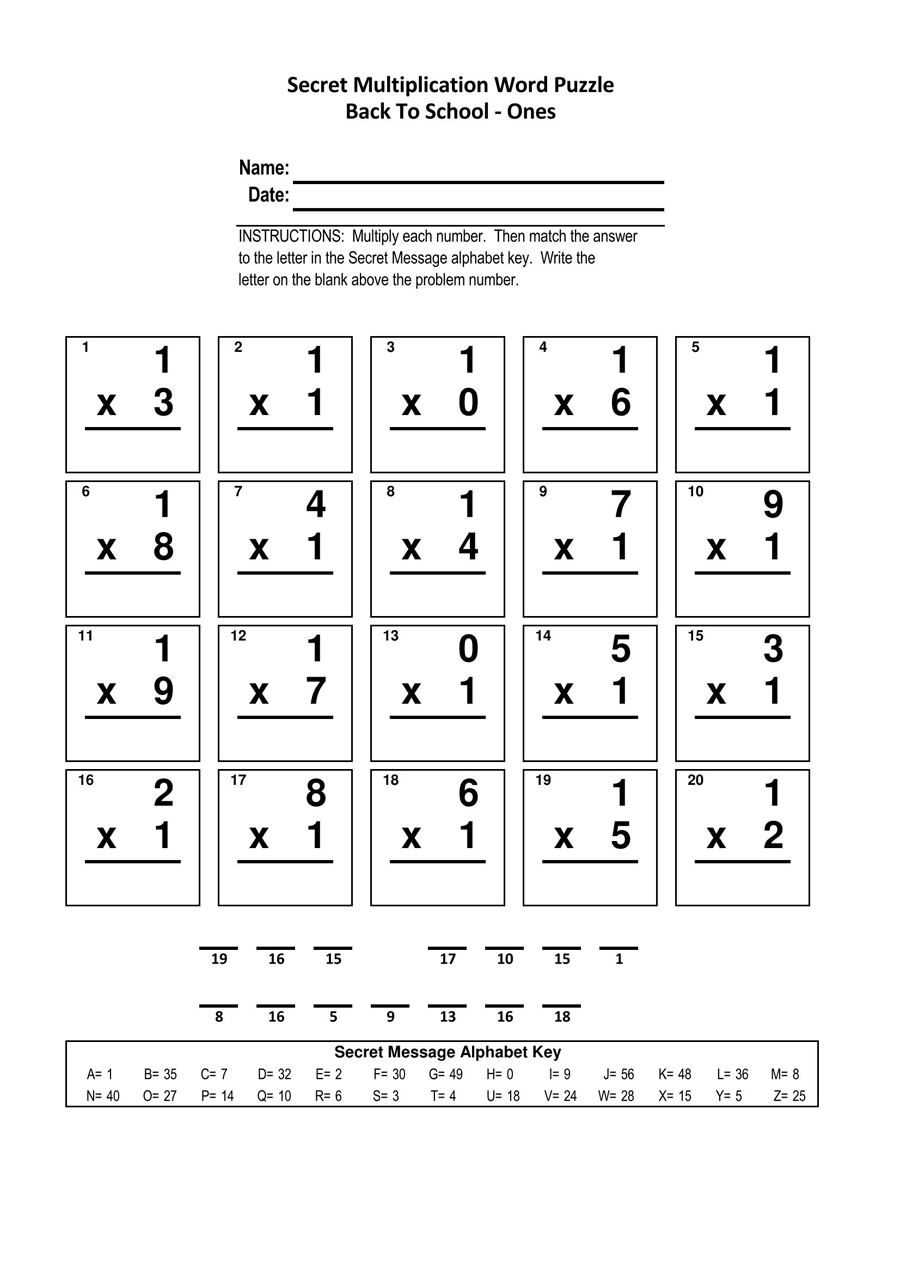
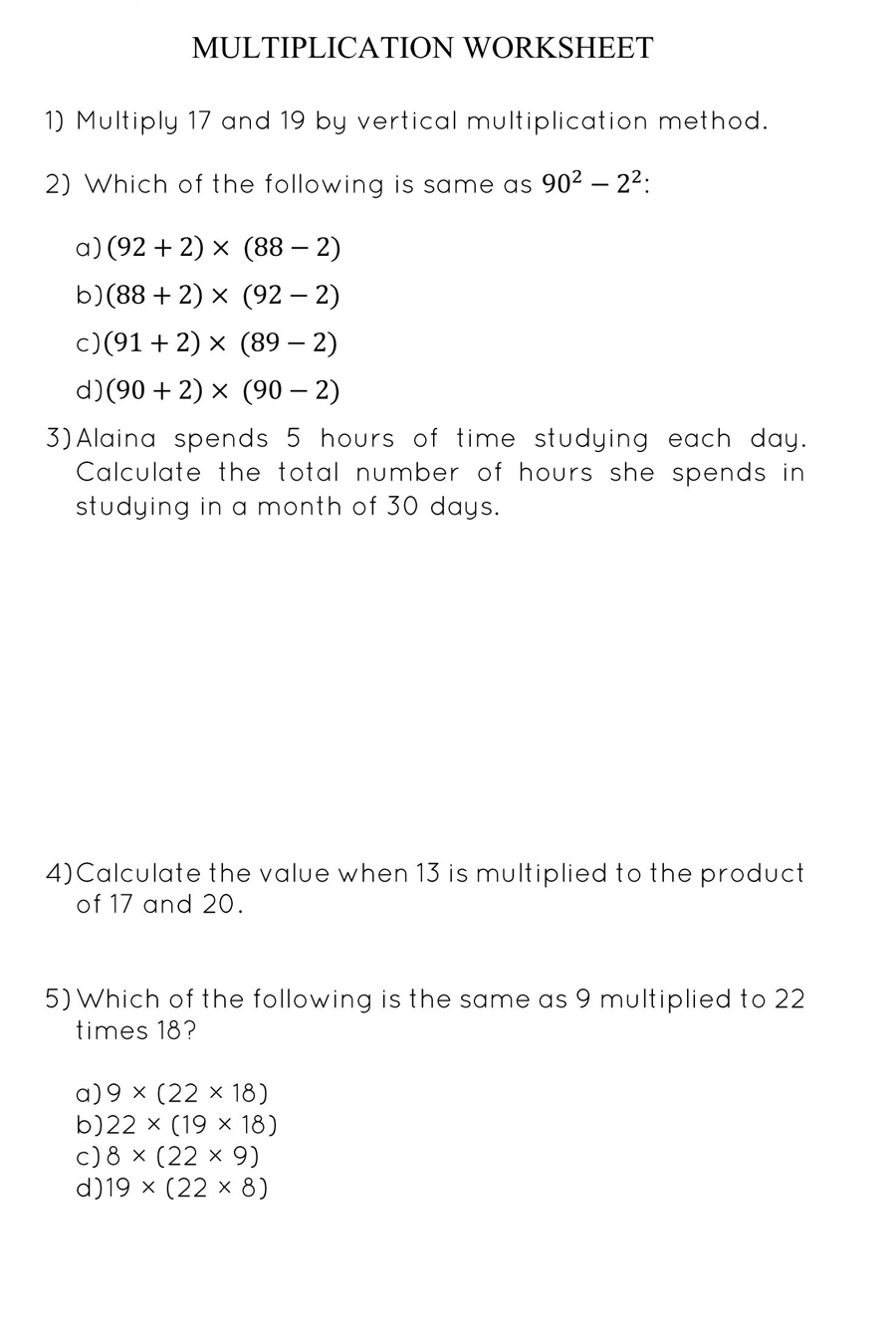
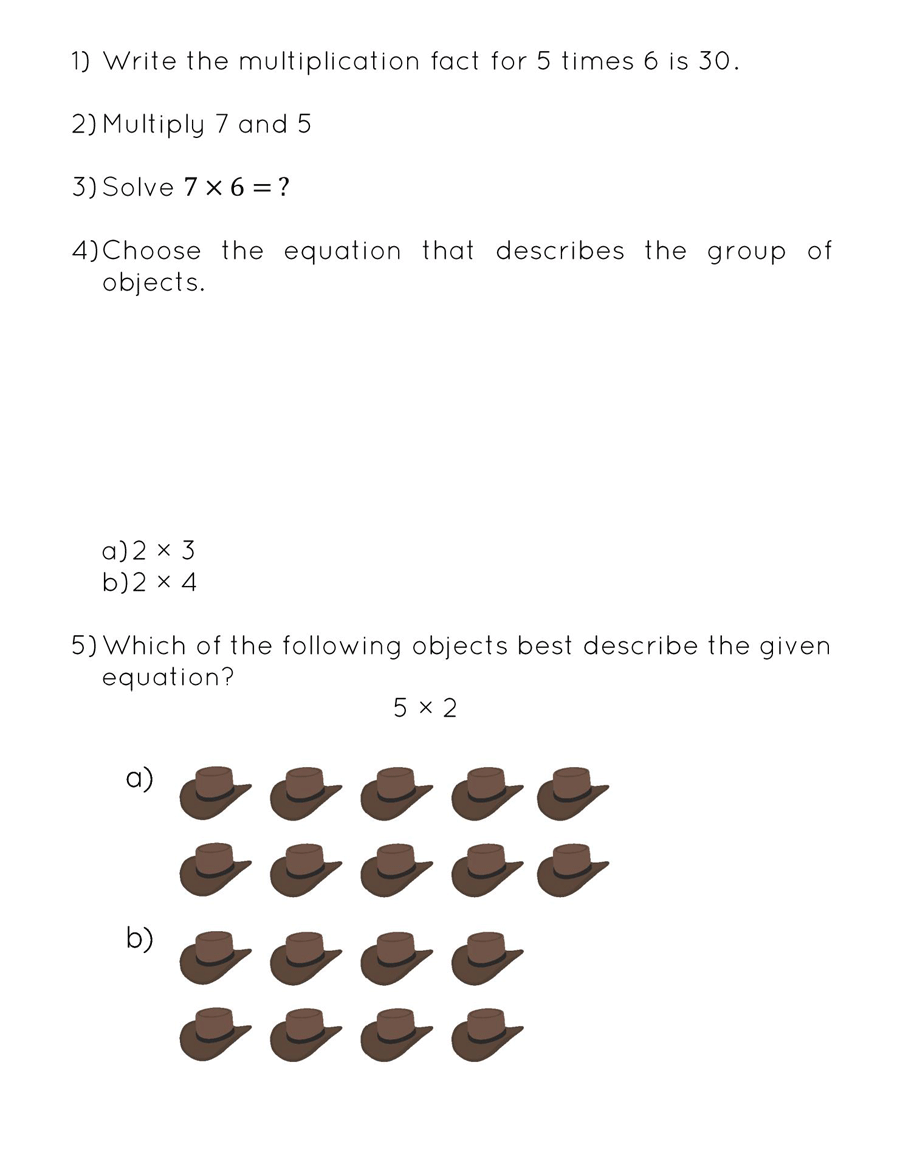
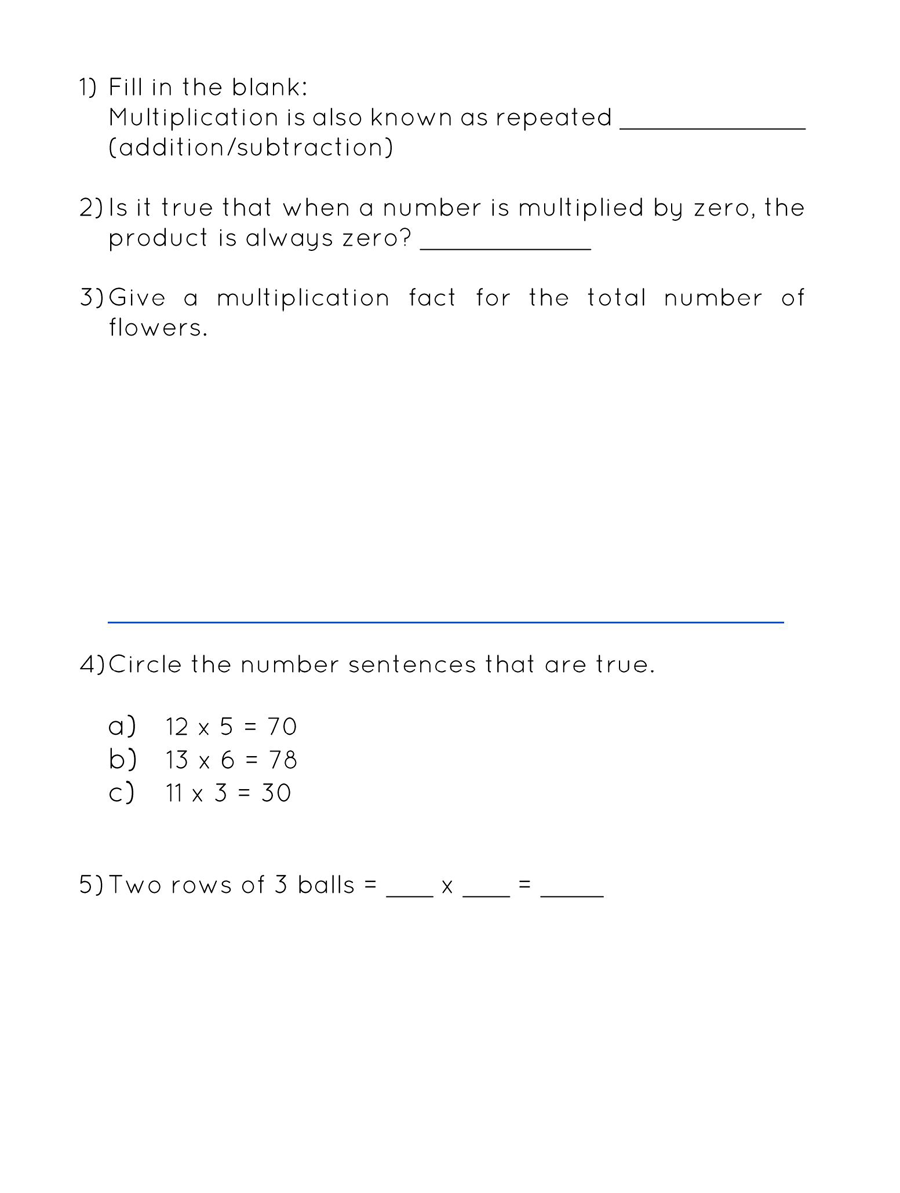
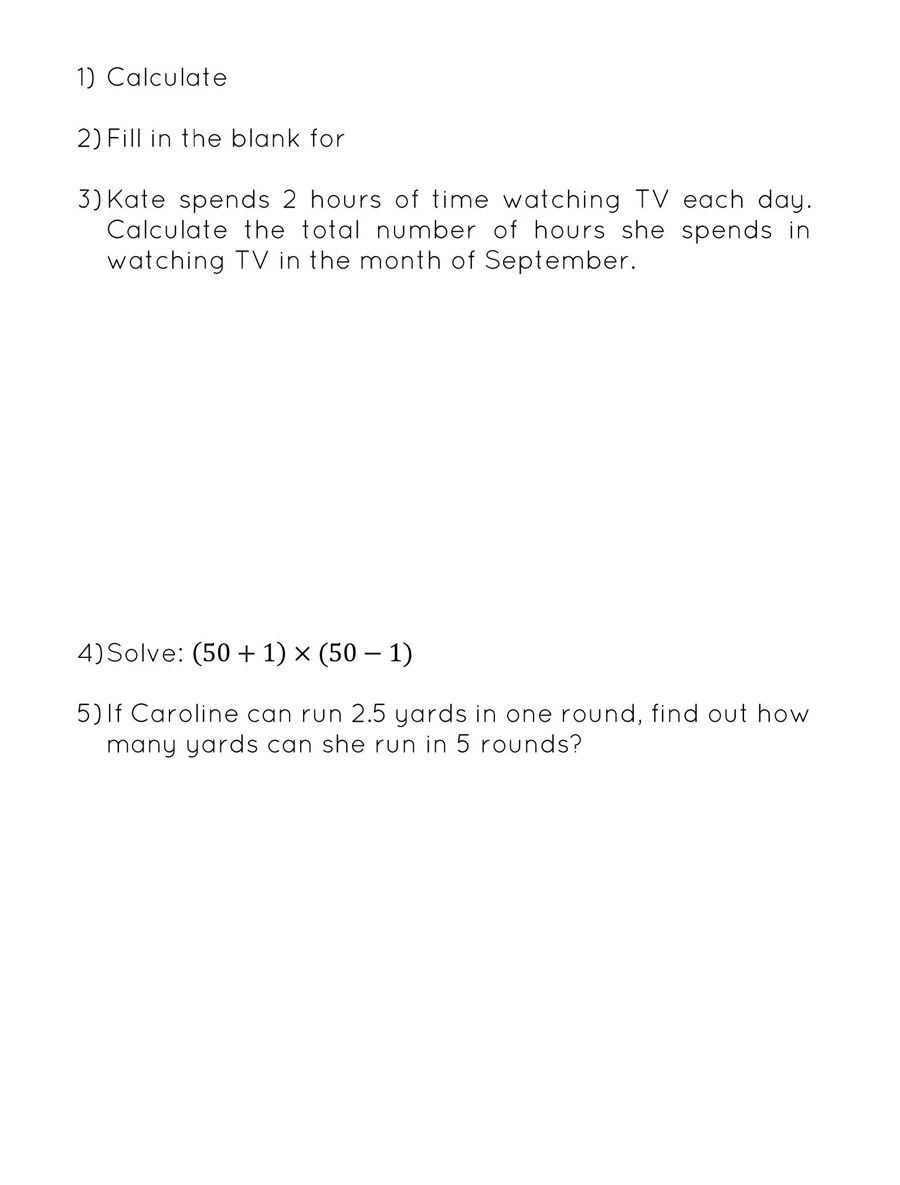
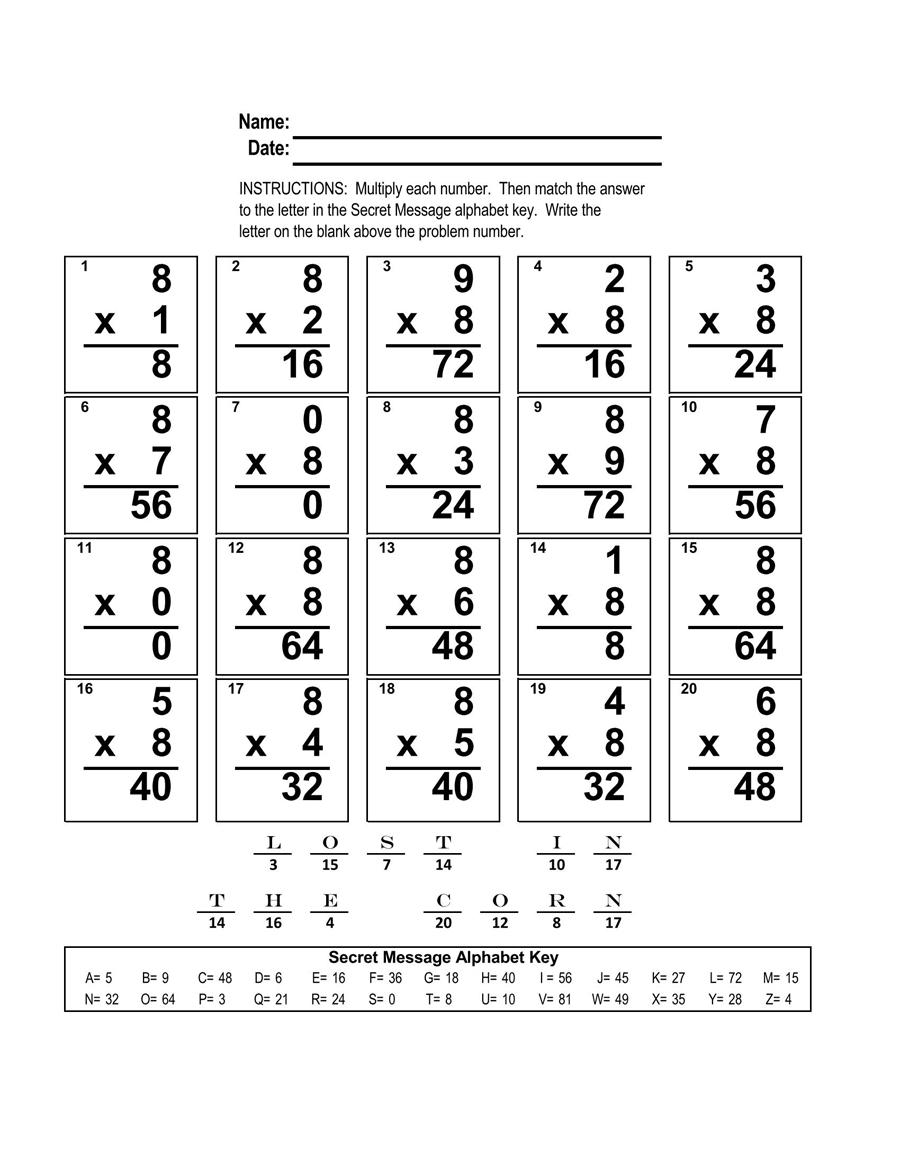
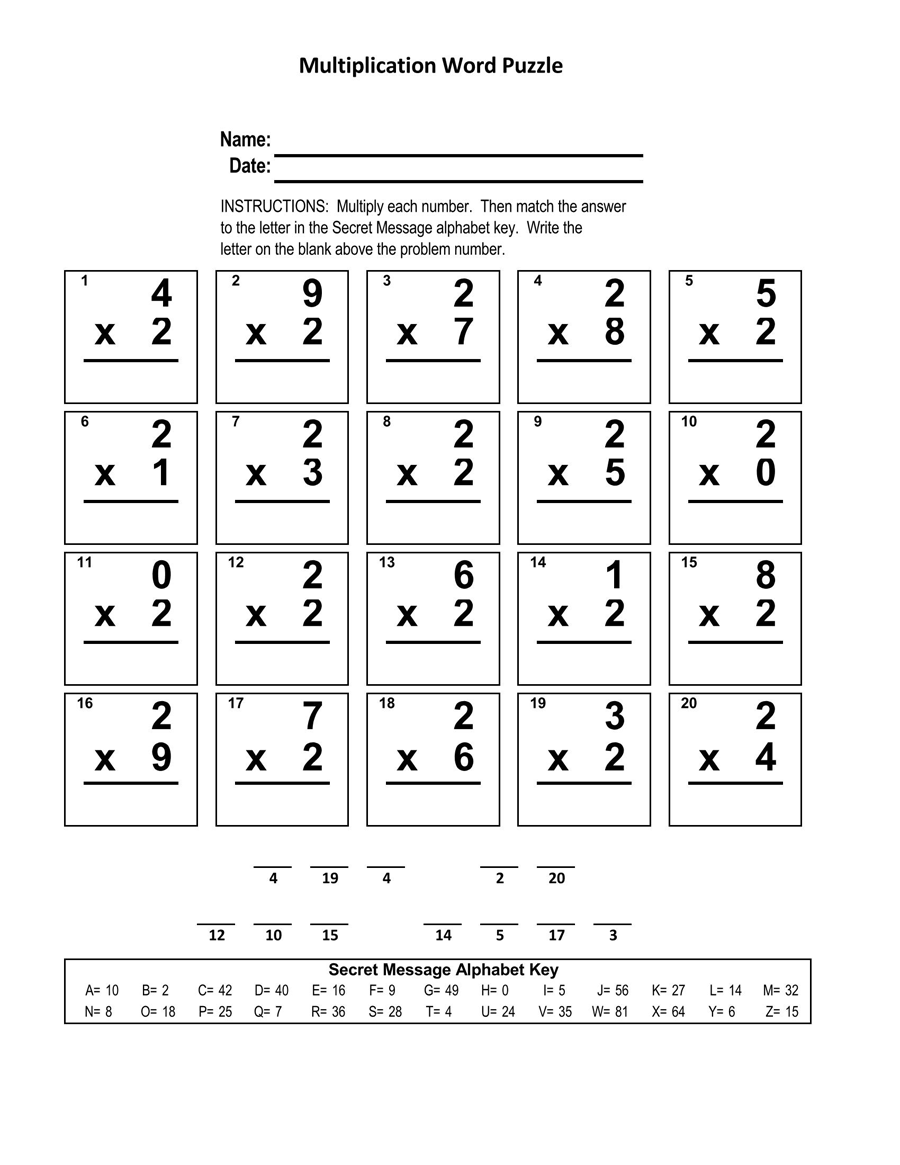
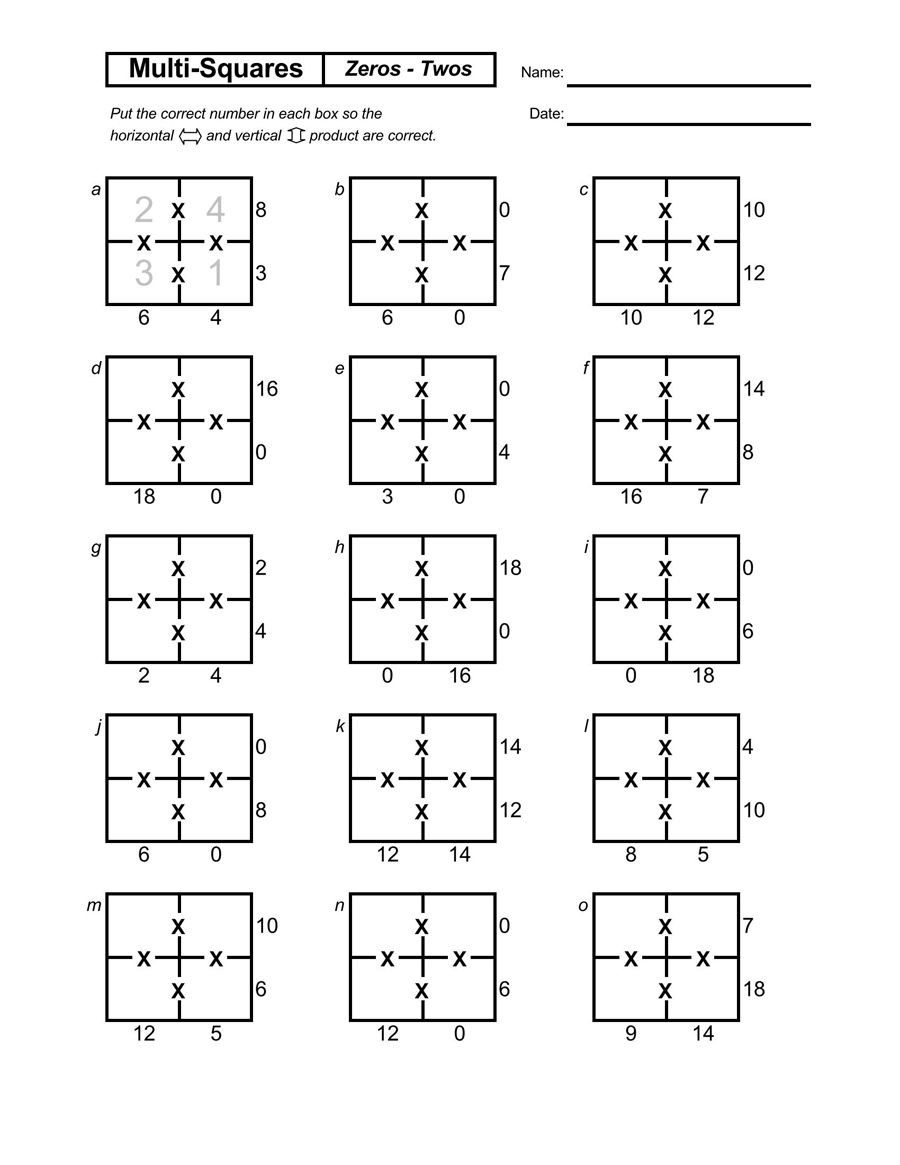
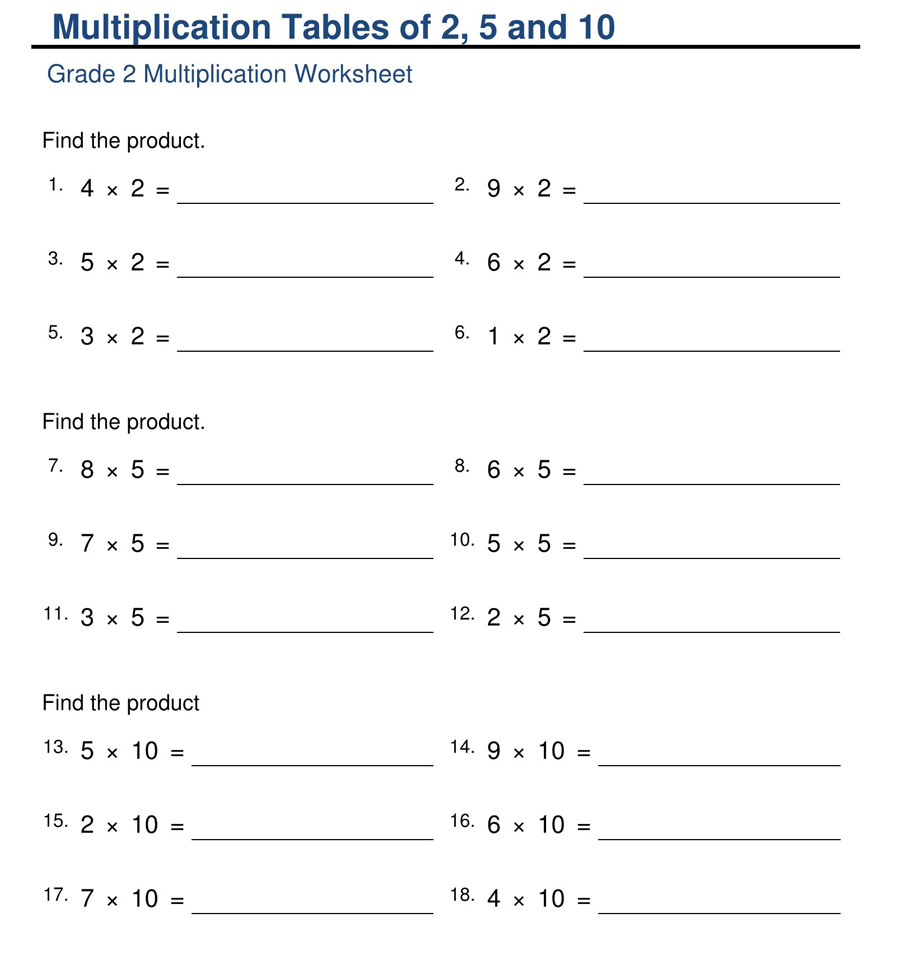
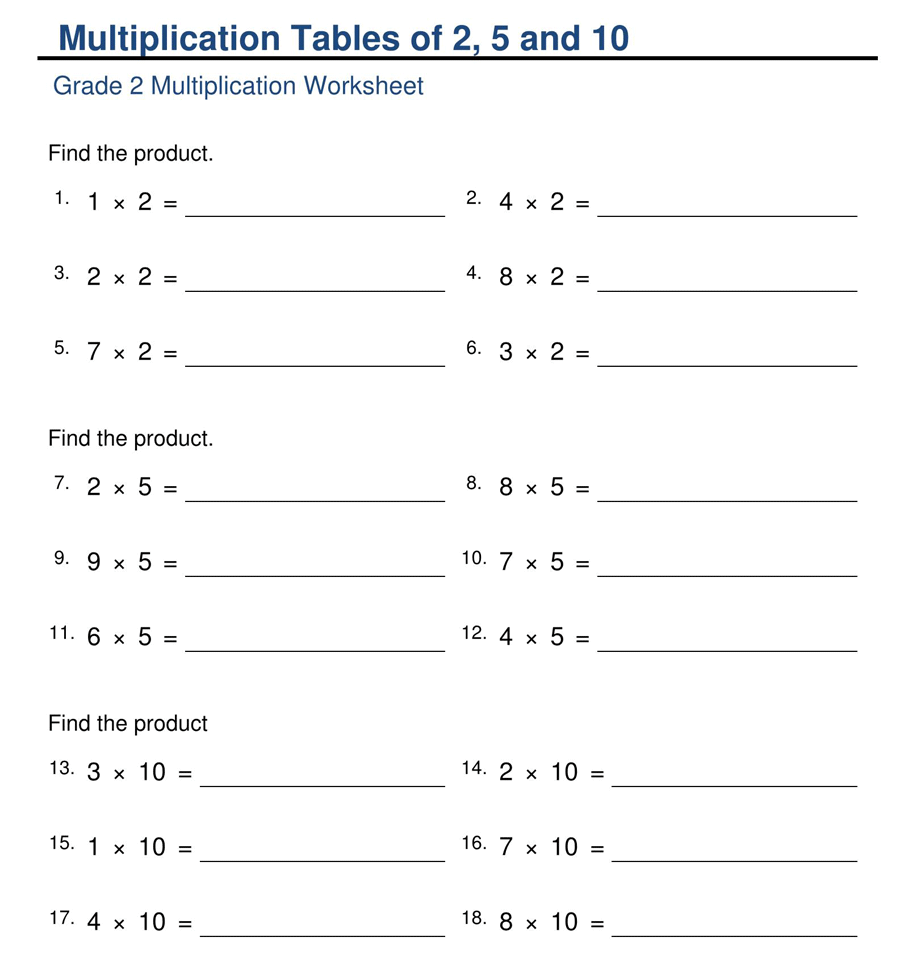
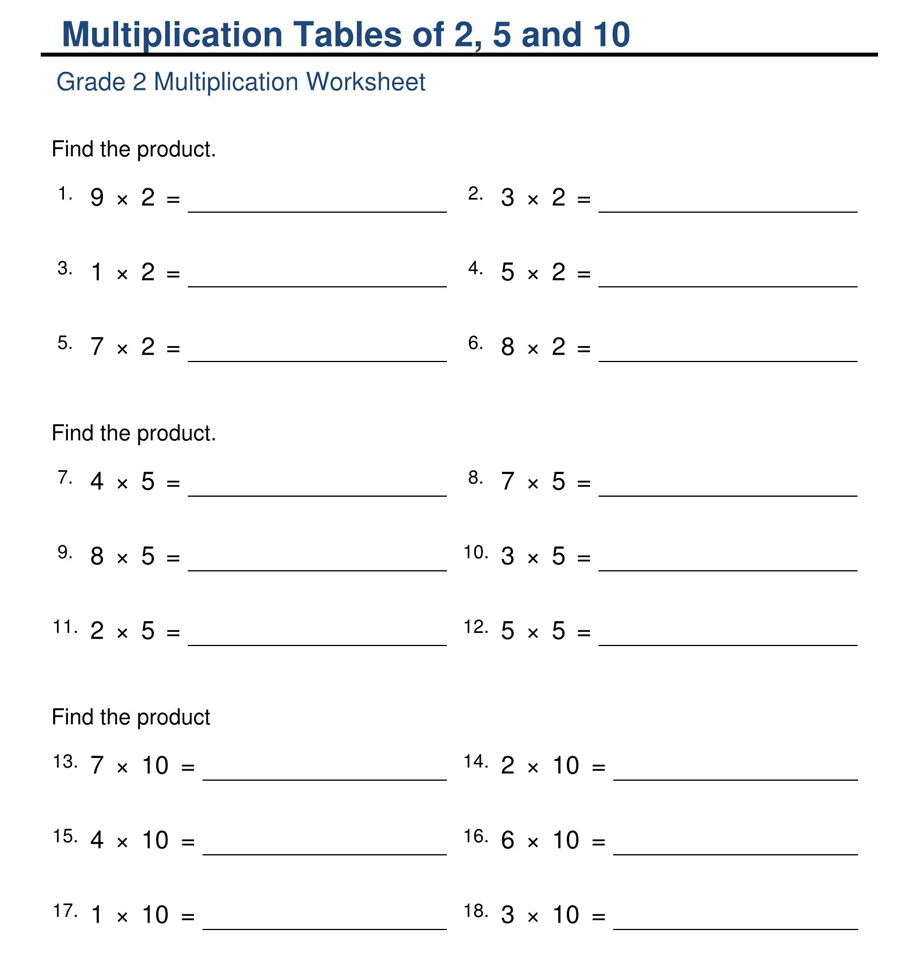
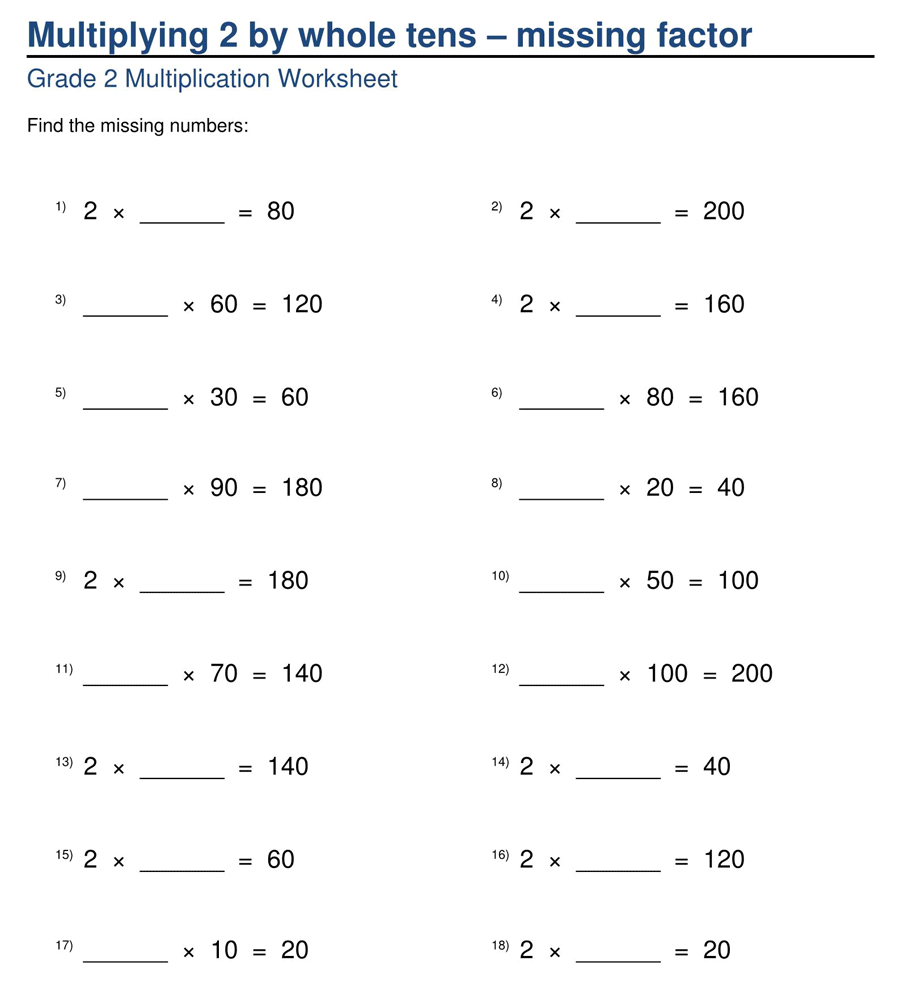
For 3rd grade
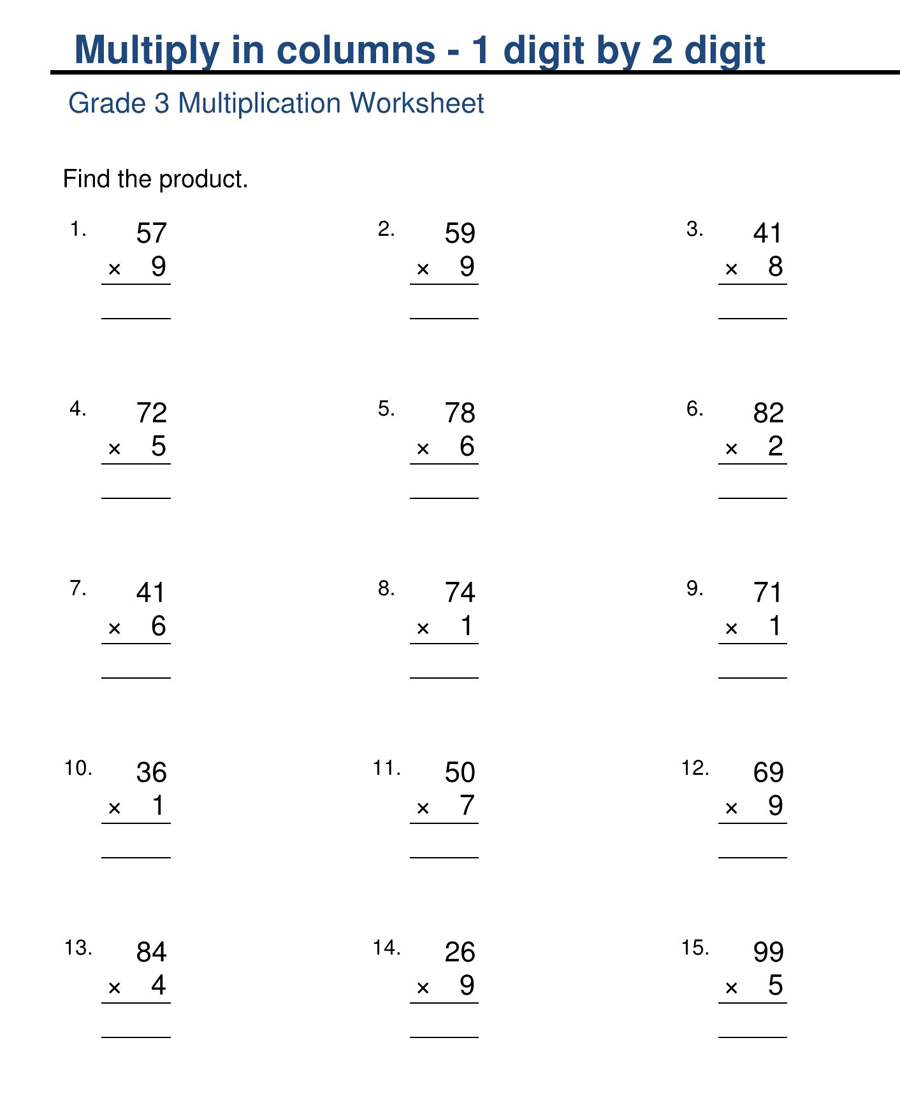
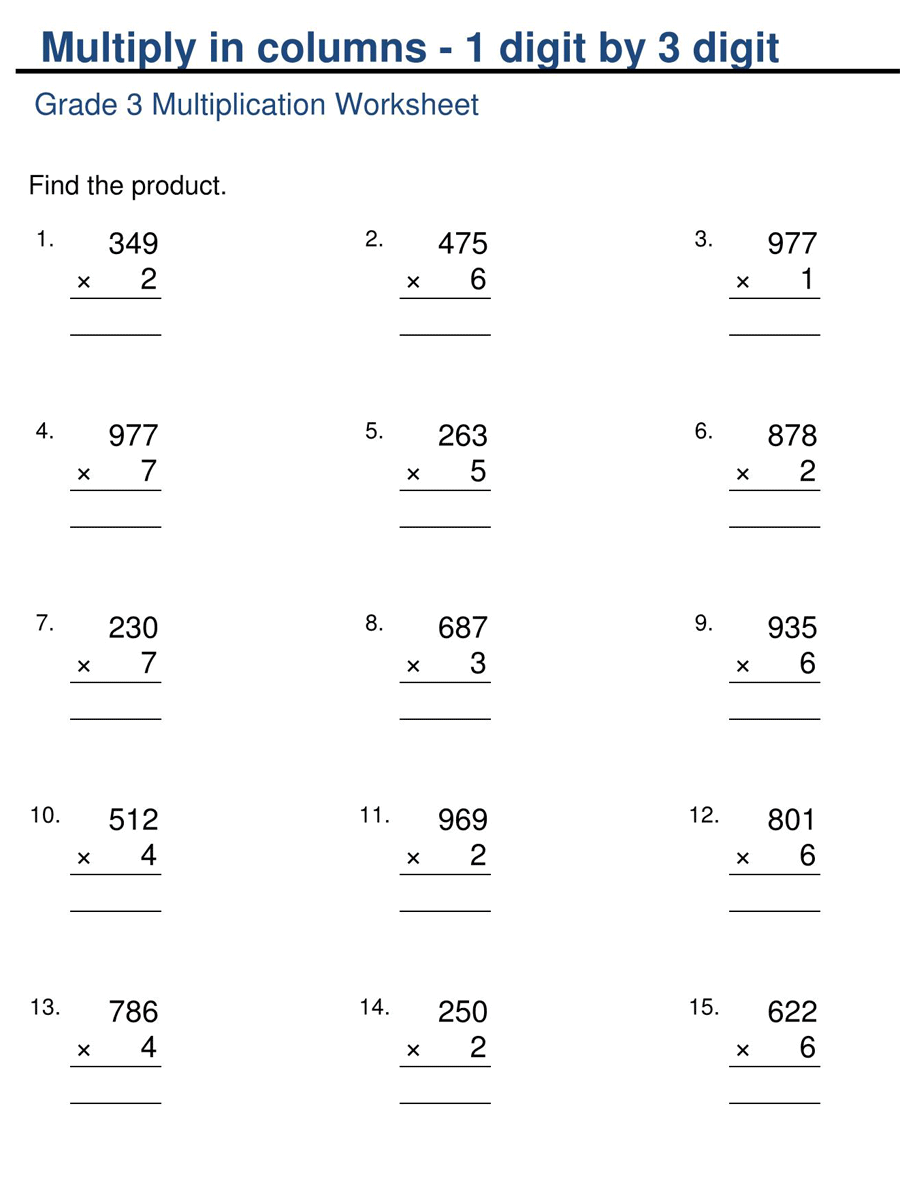
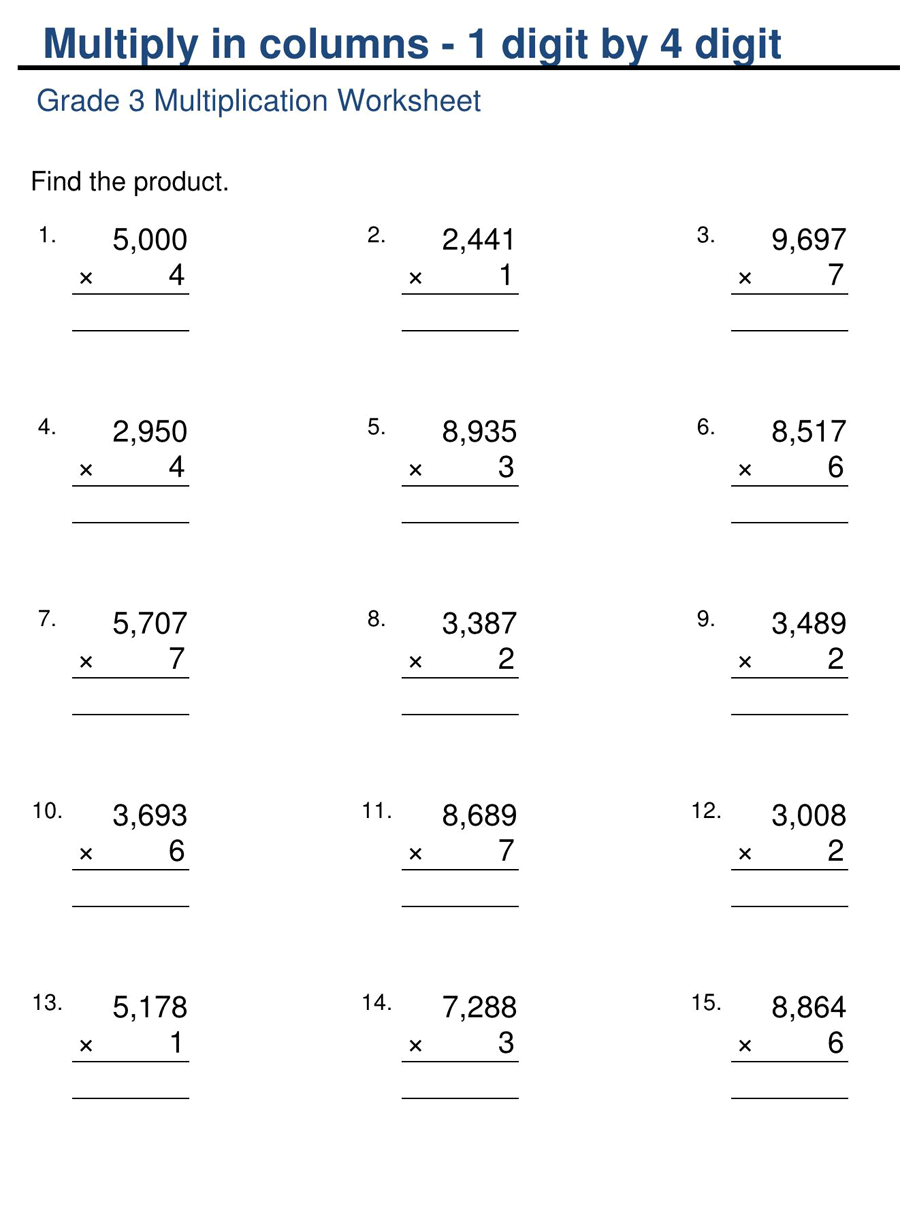
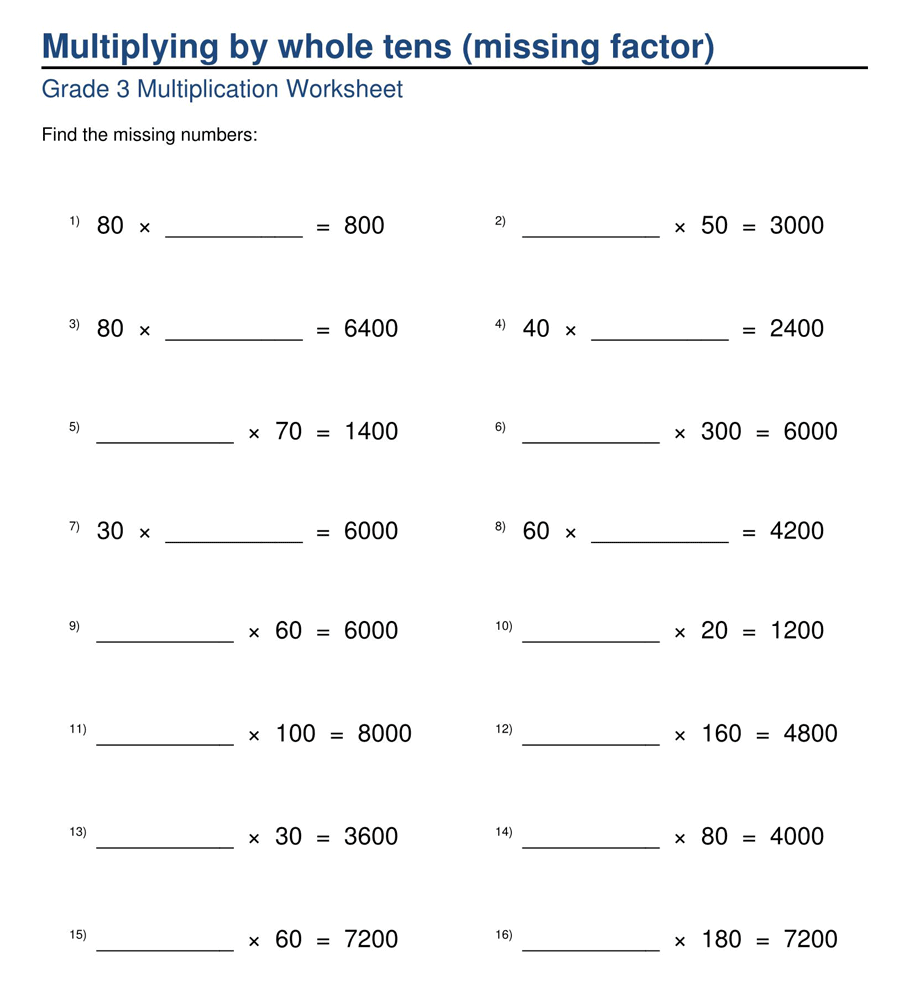
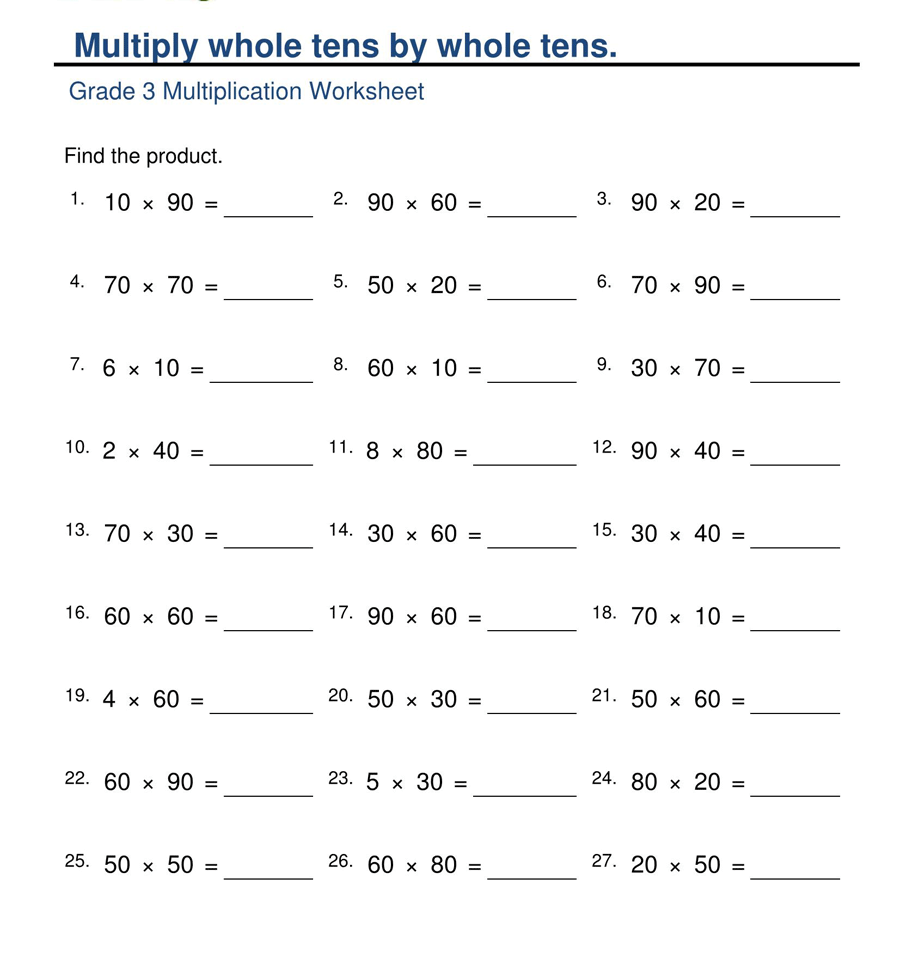
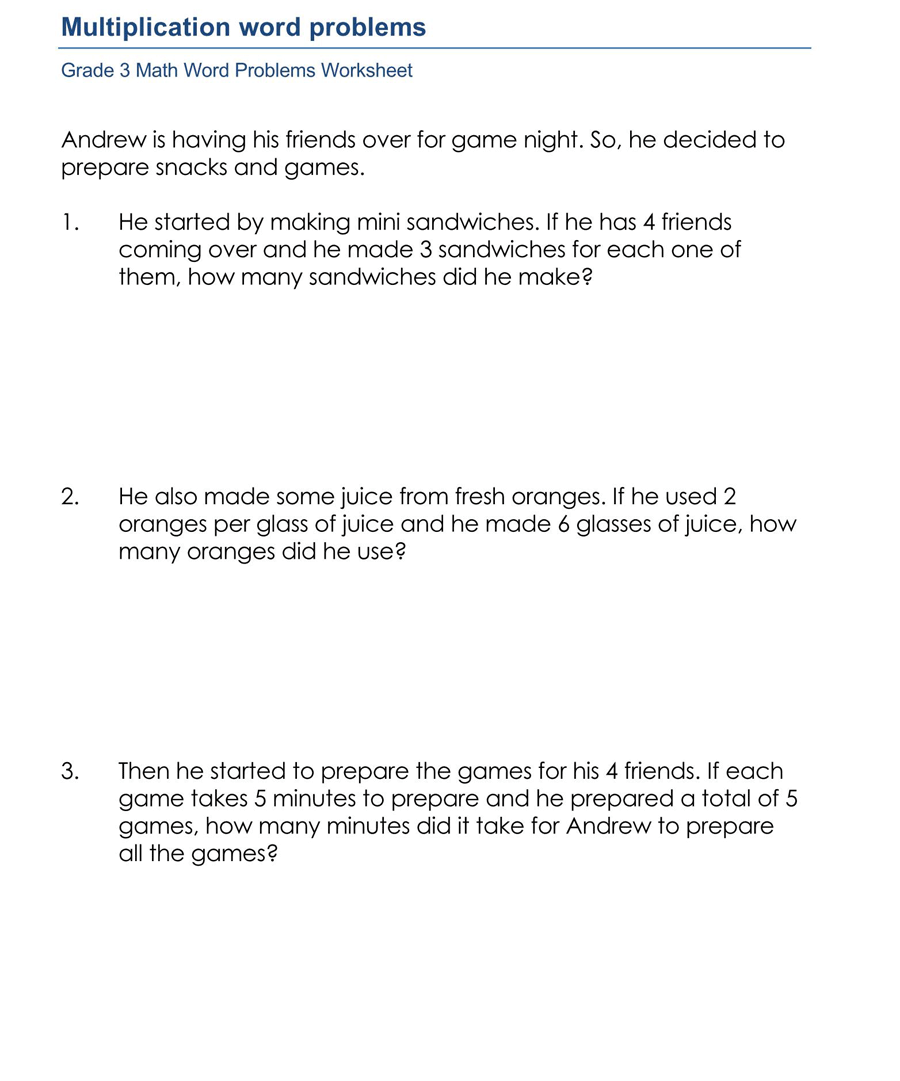
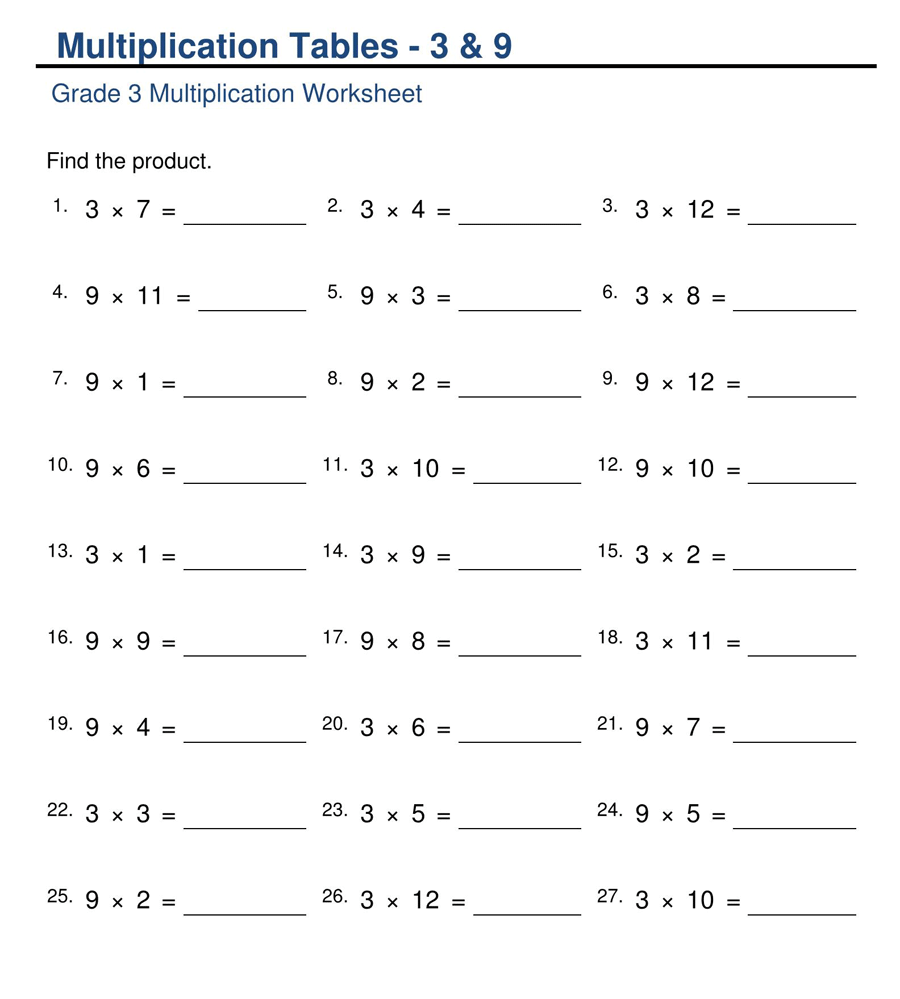
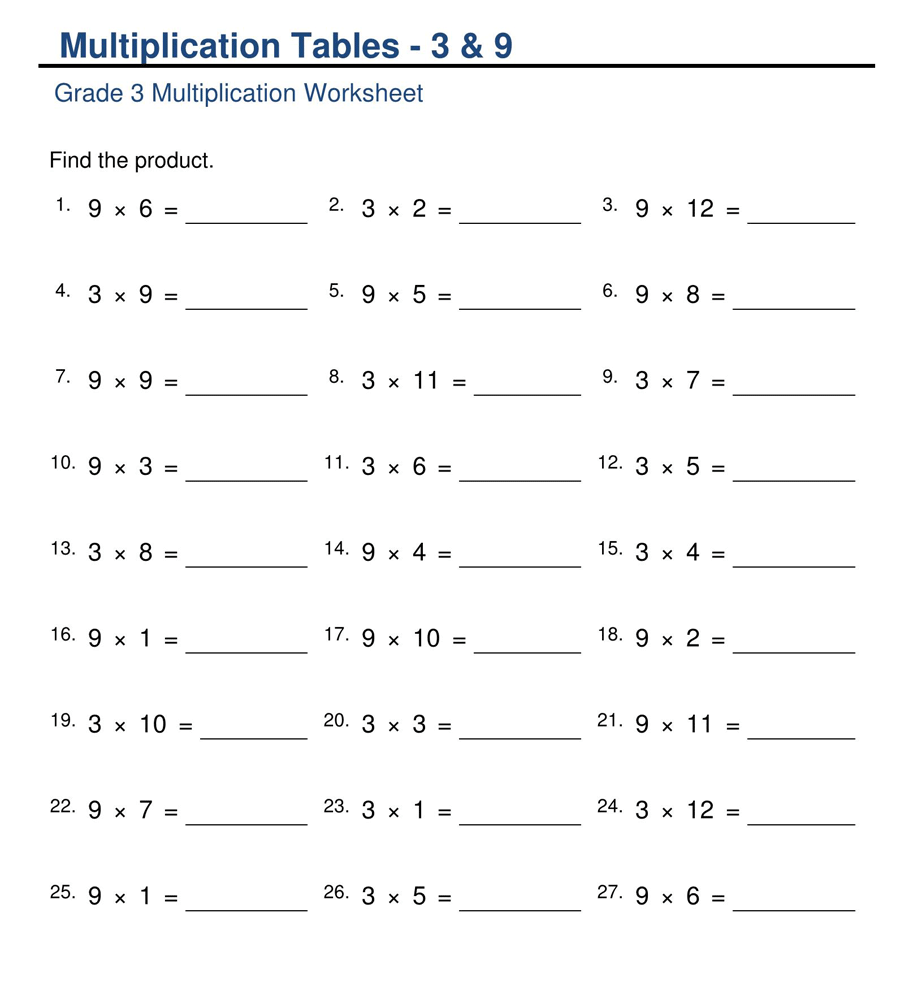
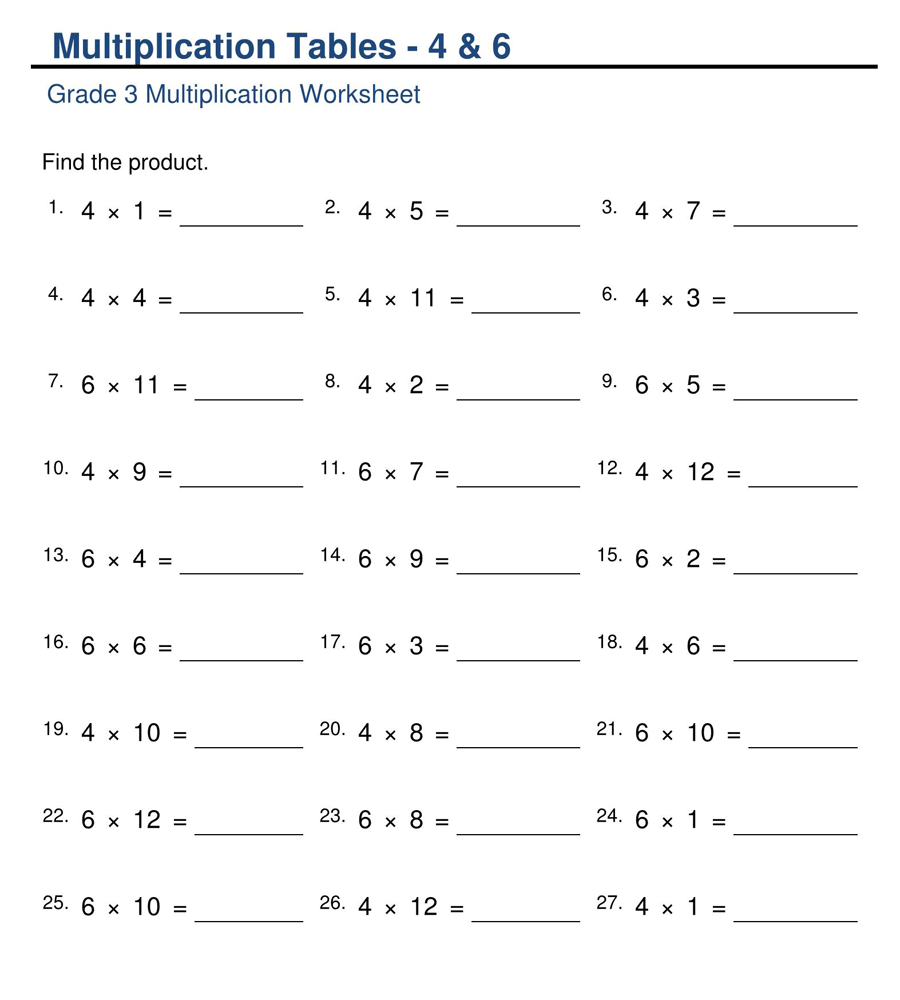
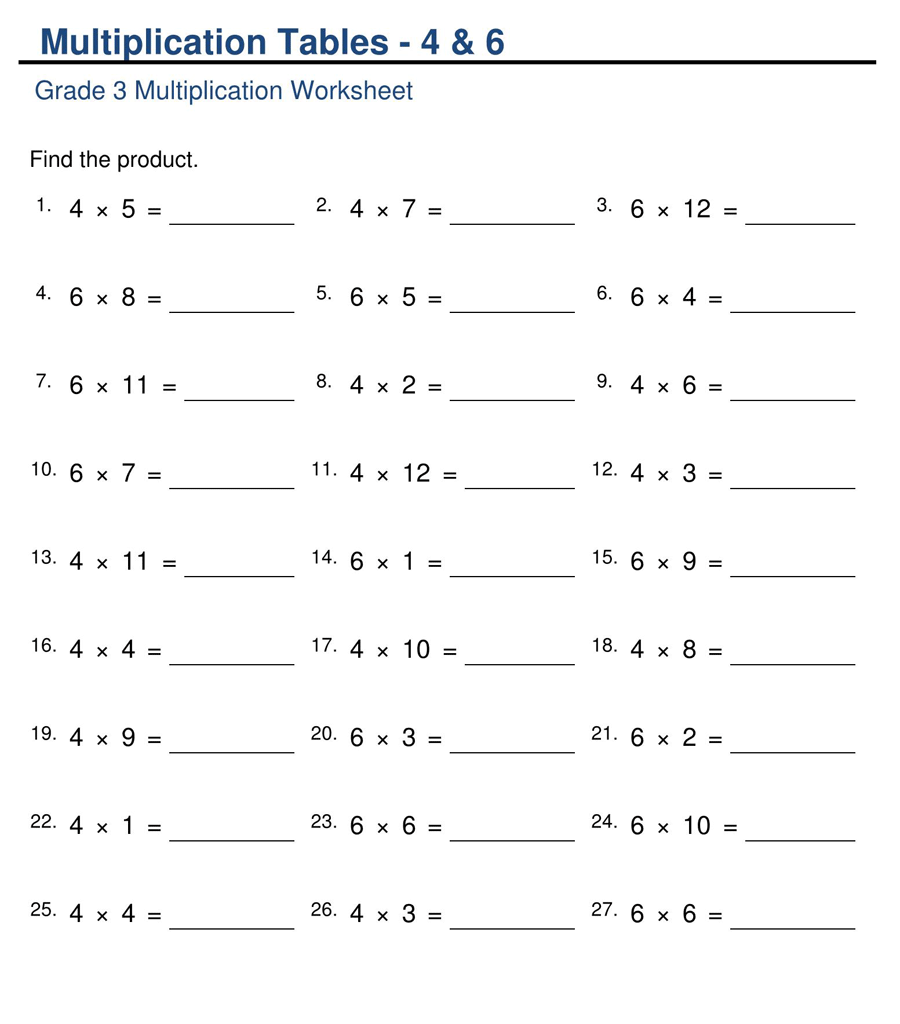
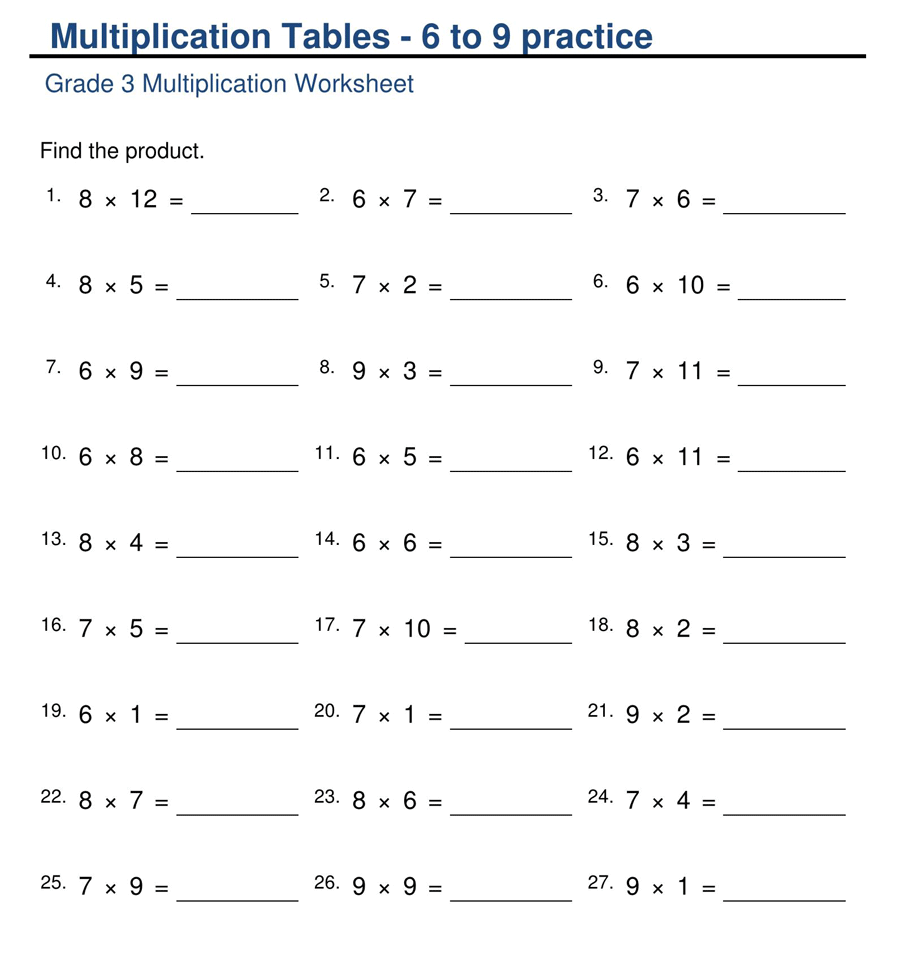
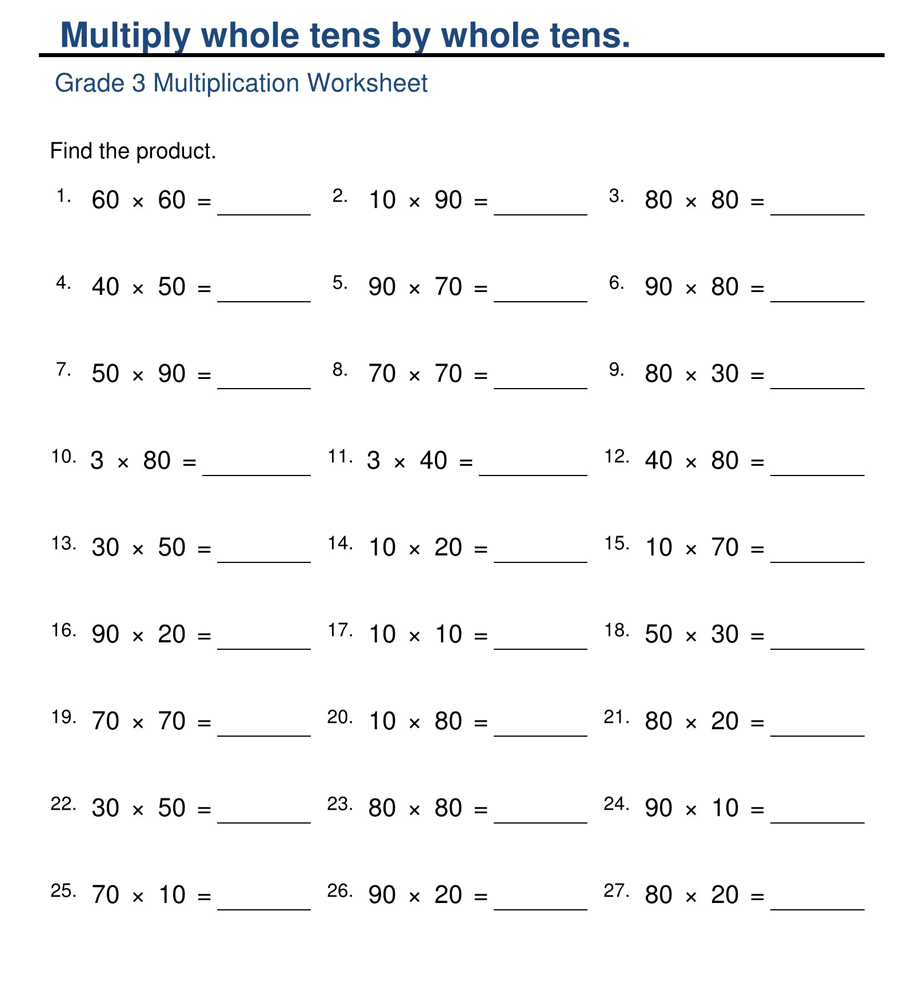
For 4th grade
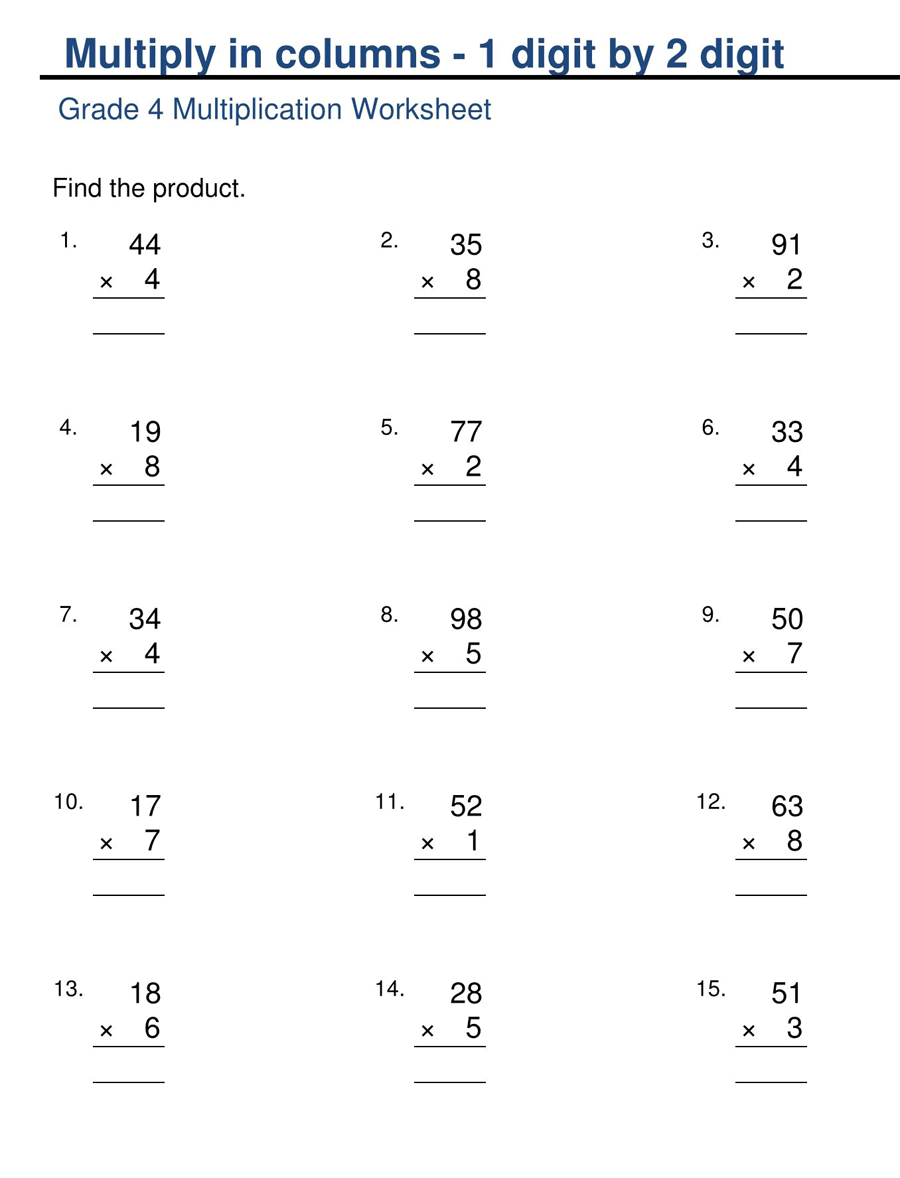
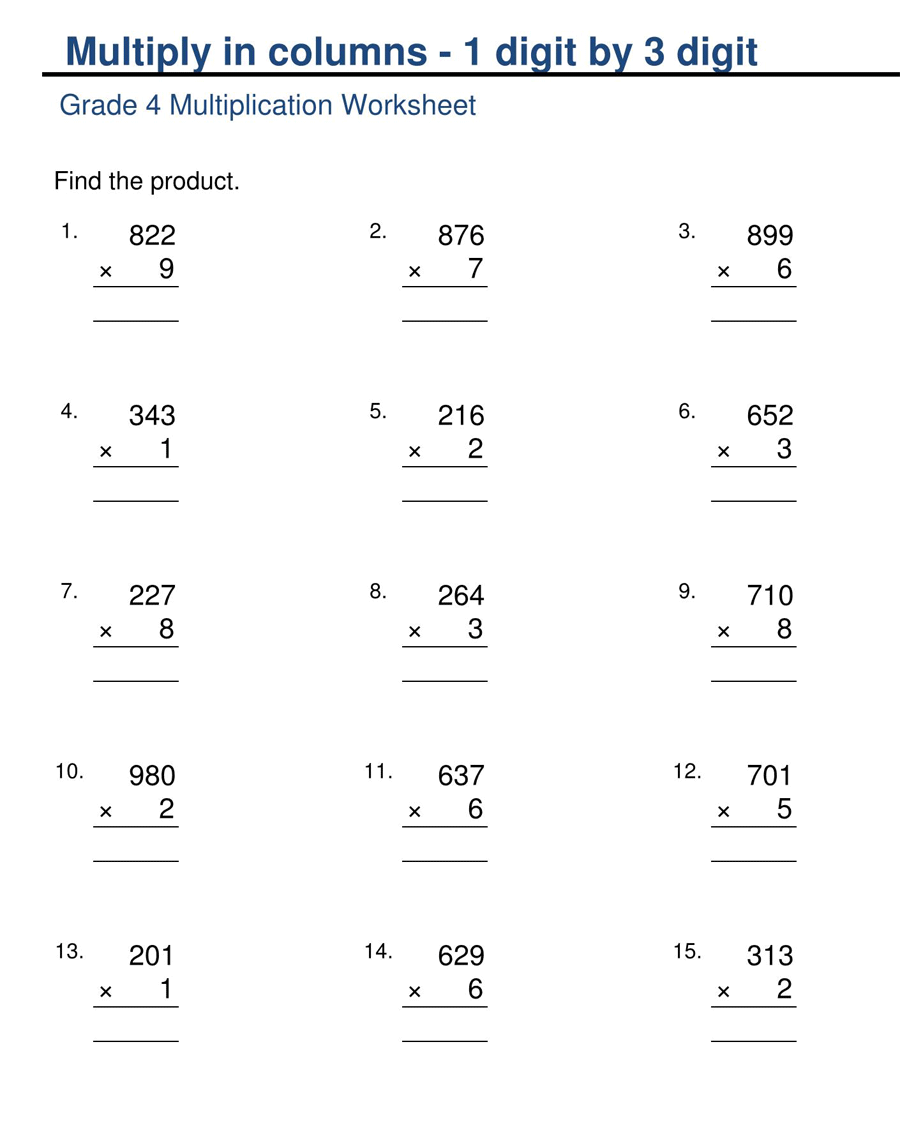
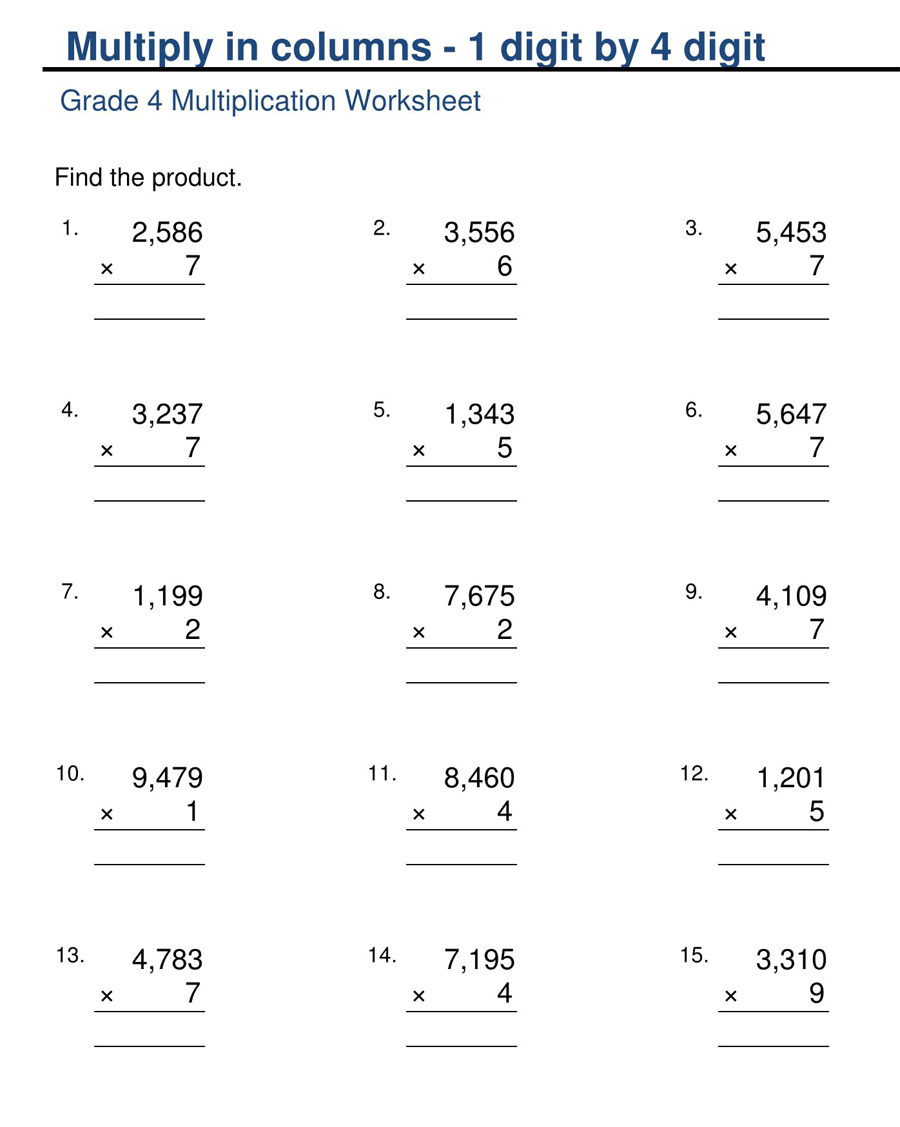
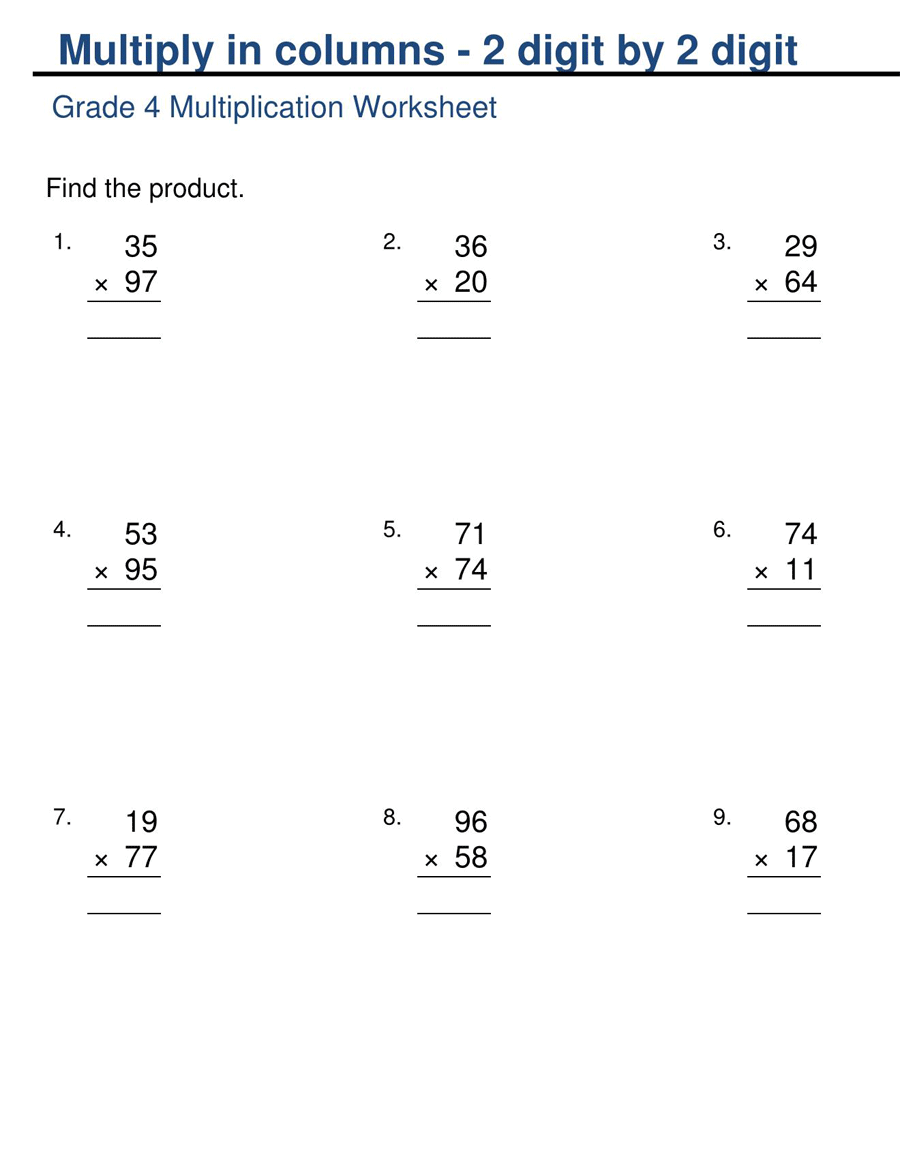
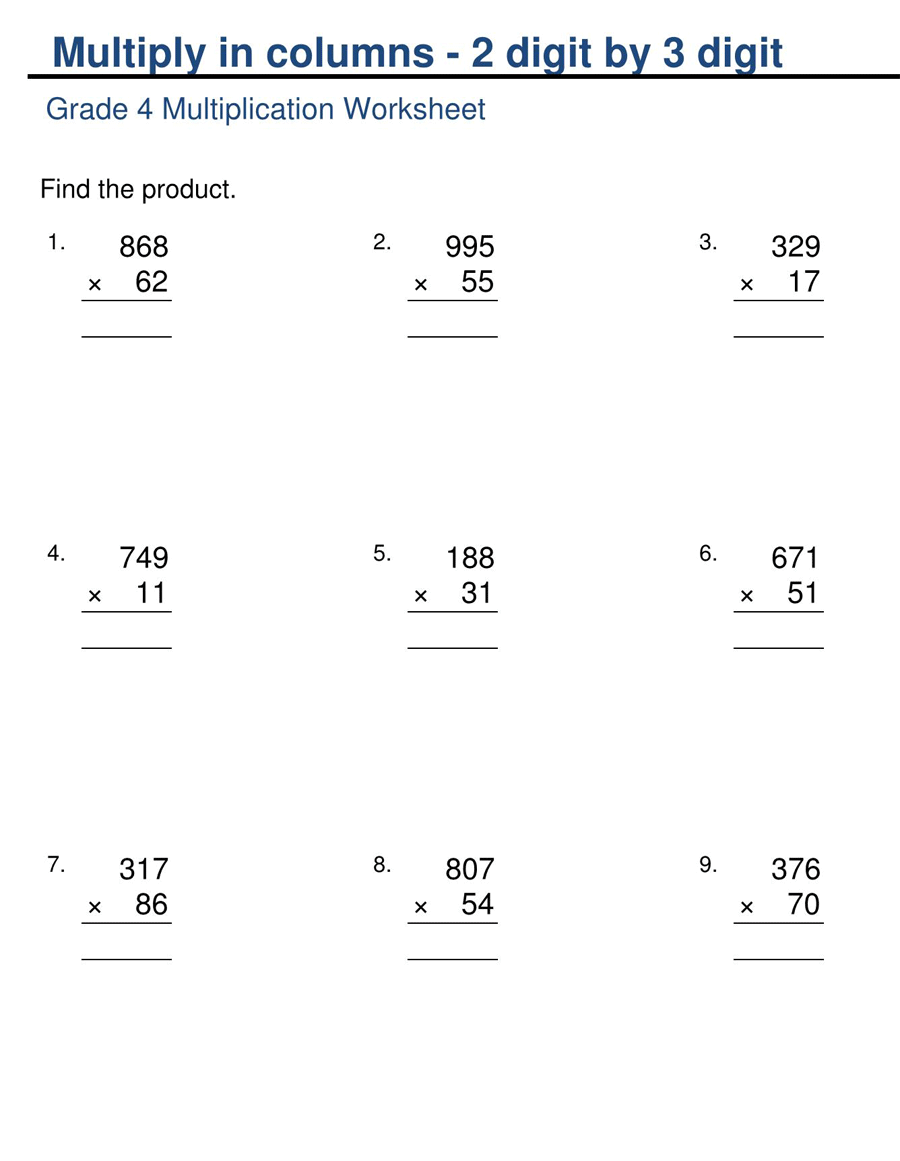
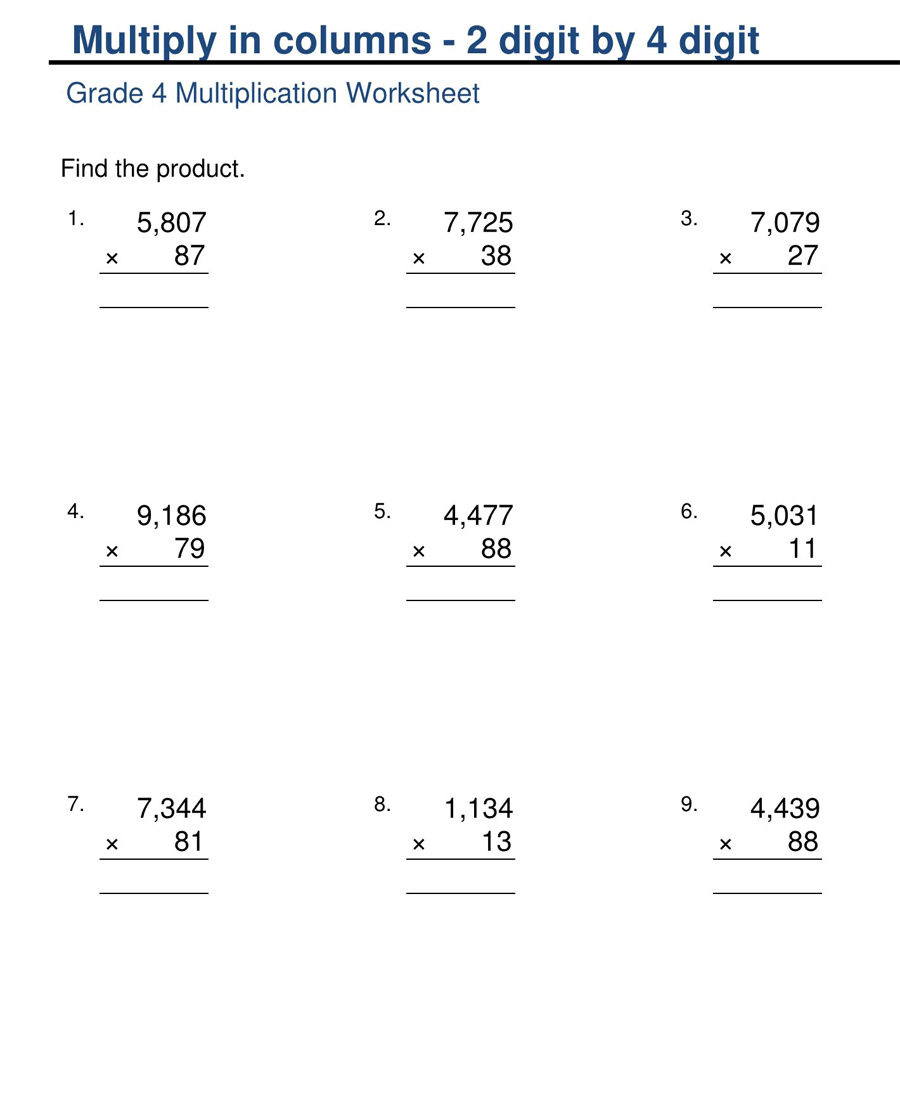
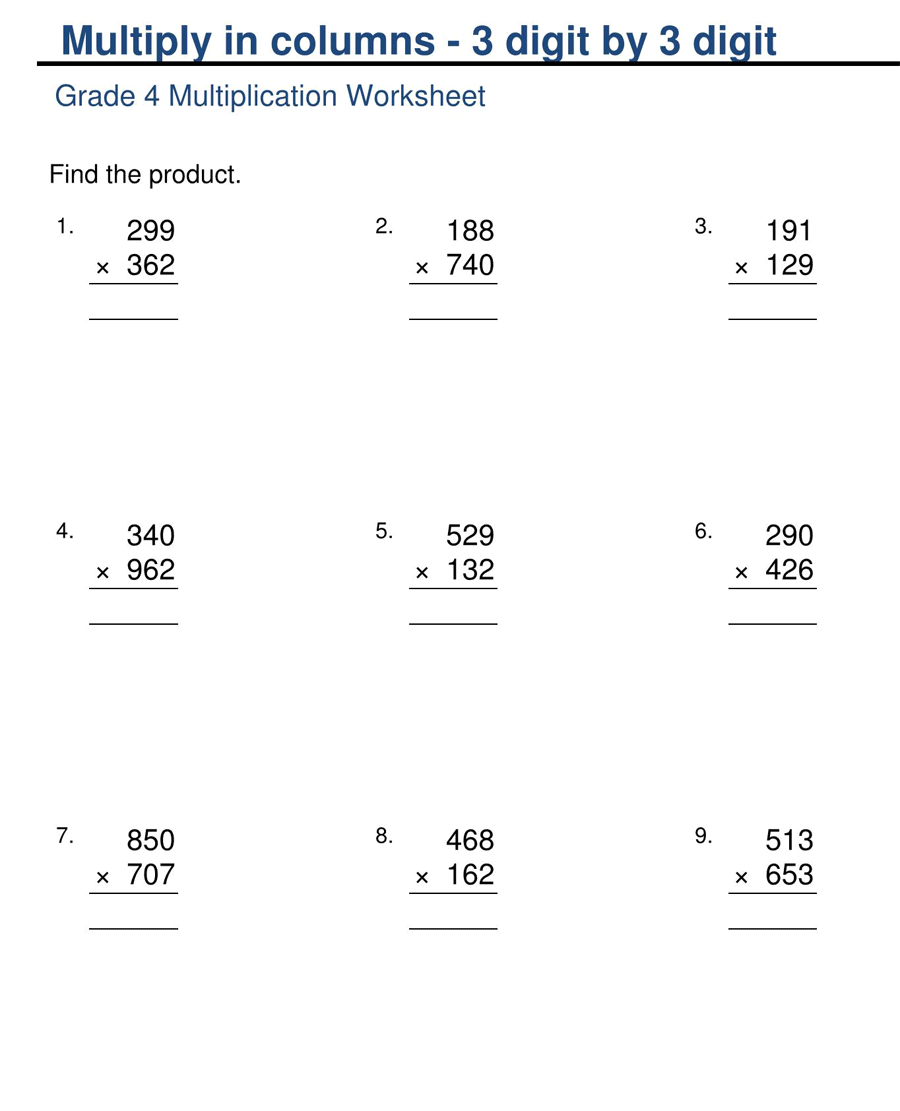
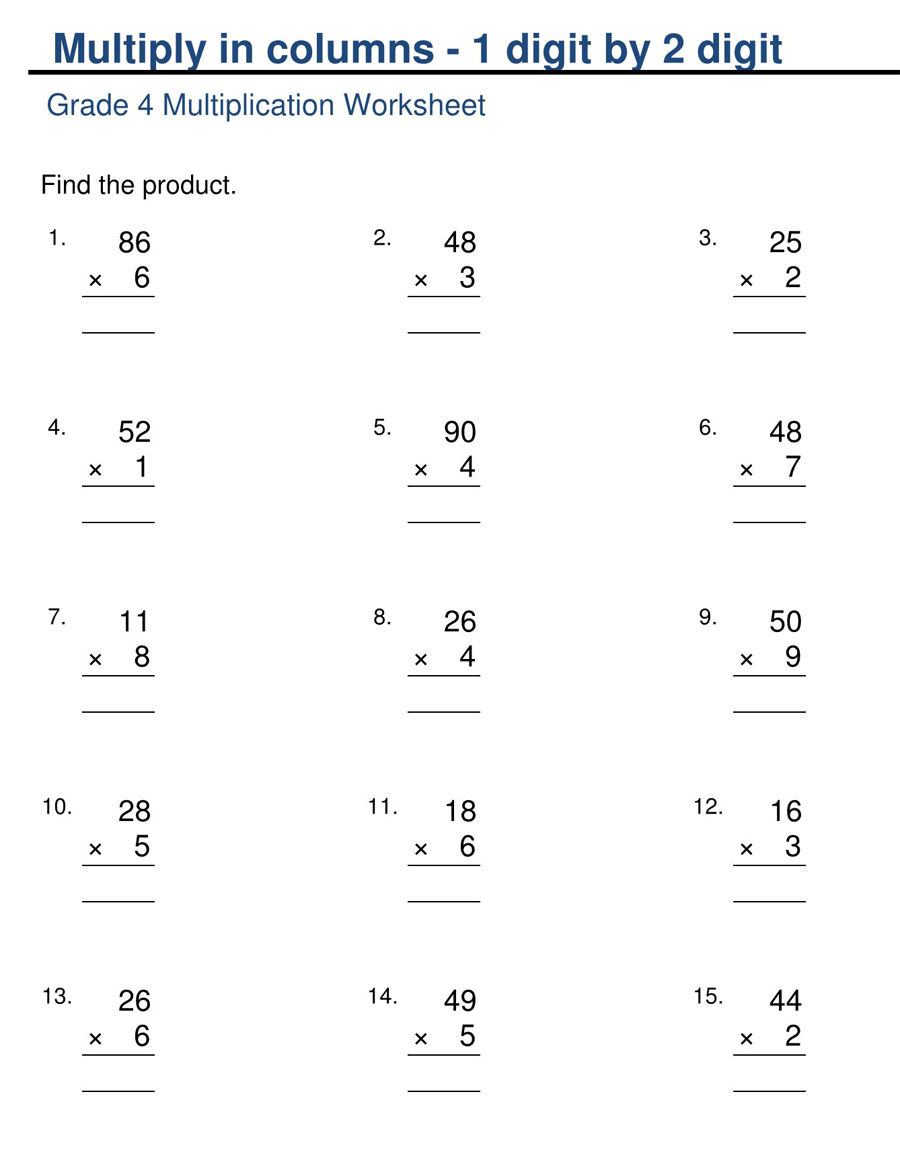
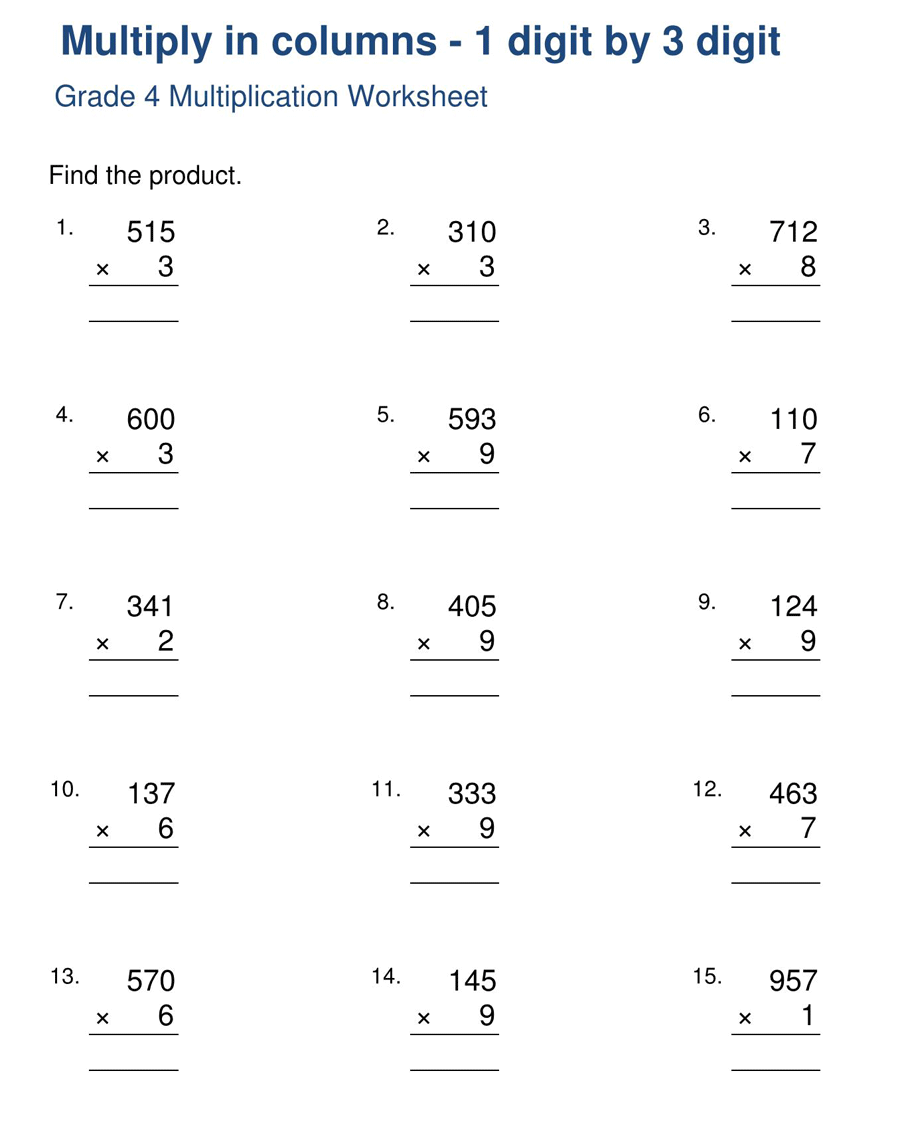
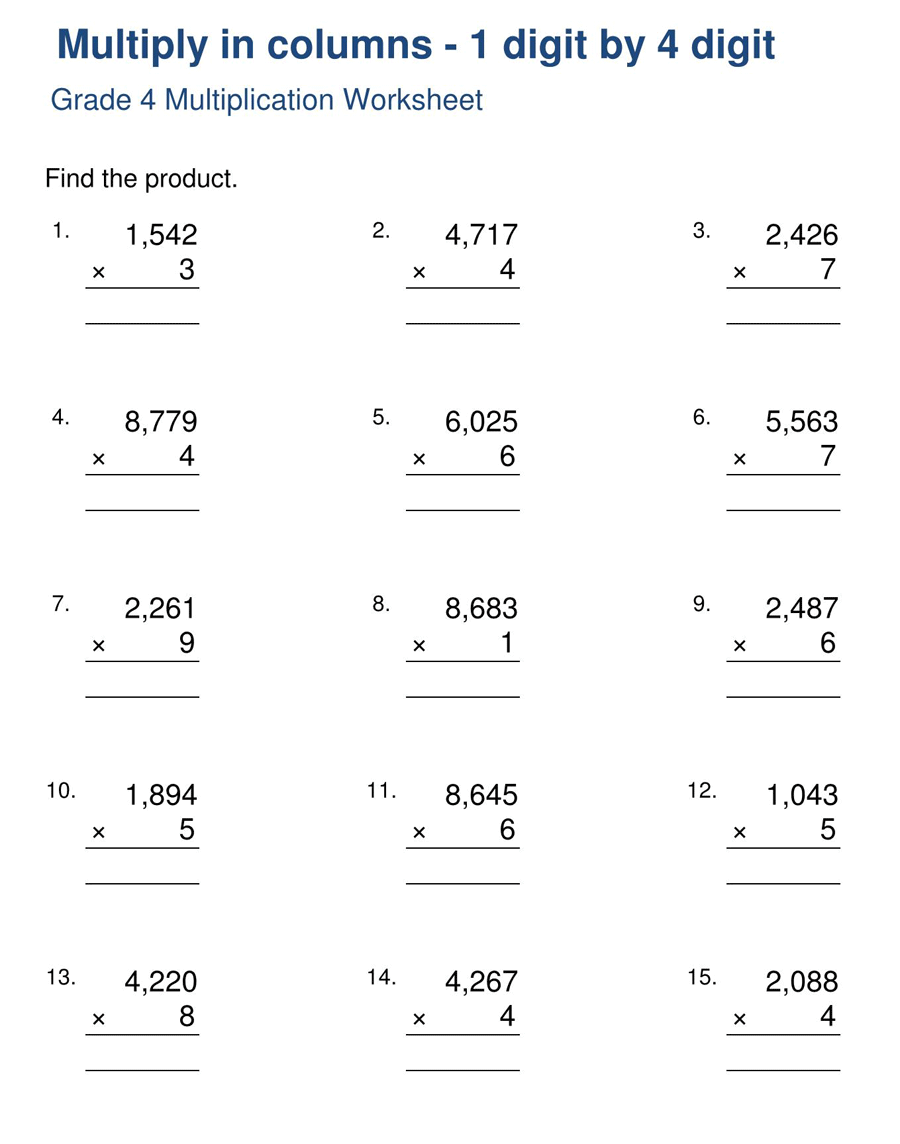
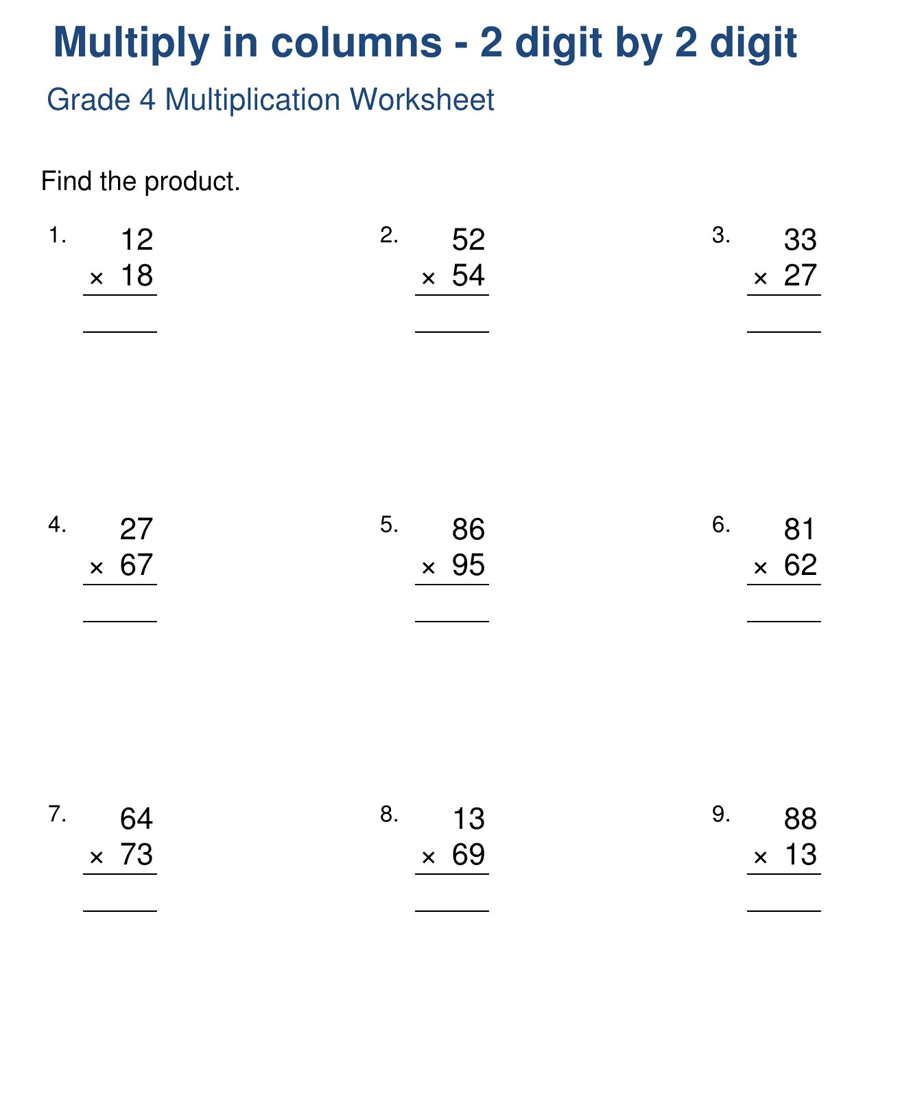
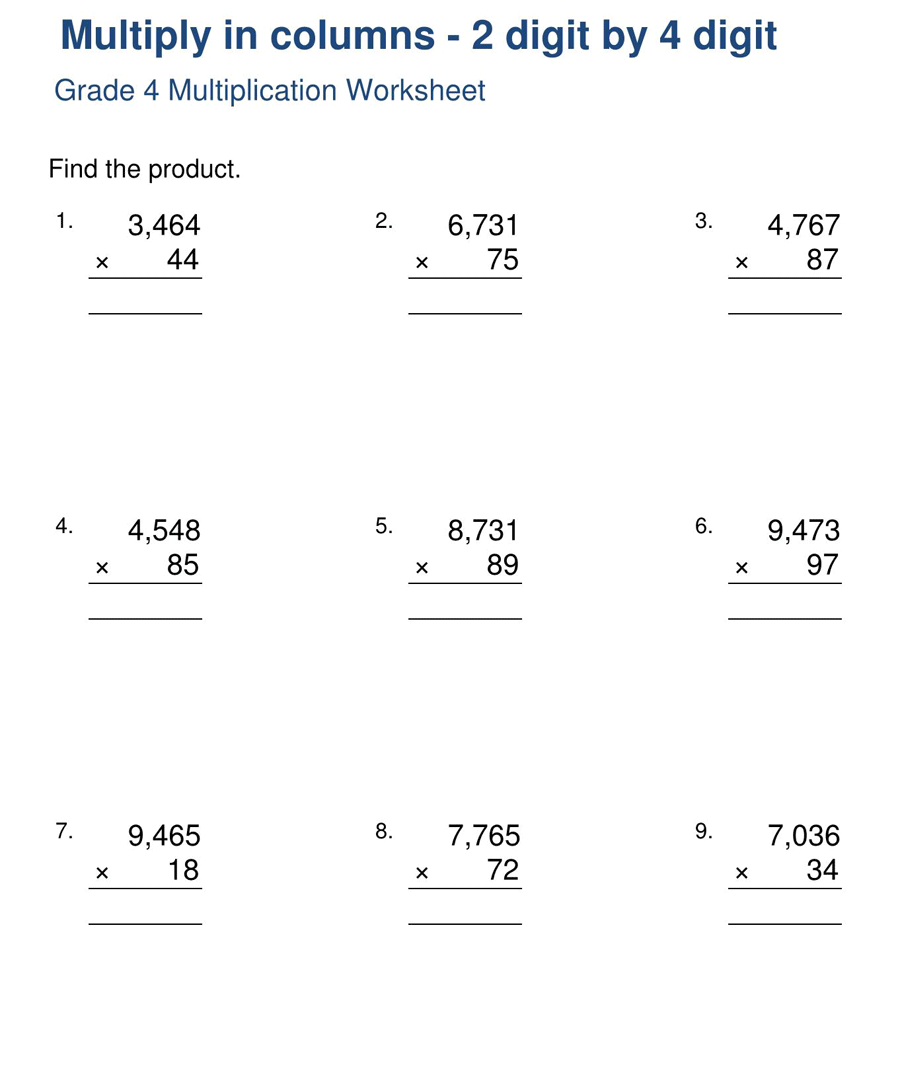
How It Works
There are two step-by-step multiplication processes that you can use when teaching your students how to multiply numbers. Depending on whether they are grade 3, grade 4, or grade 5 students, you will need to prepare the appropriate worksheets that will suit the students.
Here is how multiplication works:
Multiplication using repeated addition
Repeated addition is adding equal groups of numbers together multiple times. When it comes to solving multiplication equations using repeated addition, there are three ways that you can teach your students. Grade 3 and Grade 4 students will understand multiplication better if you use these worksheet templates that focus on repeated addition to teaching them.
“Lots of” model
This model refers to the first number in a multiplication equation as the group or multiplier and the second number as the object in the group or multiplicand.
EXAMPLE
2 × 3 = 2 “Lots of” 3, which means there are two groups with three objects in each group. Using repeated addition, 2 × 3 = (3+3) results in 6.
“Multiplied by” model
For this model, the first number in the multiplication equation is multiplied by the second number. When you use repeated addition, the first number will be repeated the number of times as the value of the second number.
EXAMPLE
2 × 3 = 2 “multiplied by” 3, which means that the first number (2) must be repeated 3 (value of the second number) times. Using repeated addition, 2 × 3 = (2+2+2) which results to 6.
Using images and arrays
This method of multiplication can be applied across the “lots of” and “multiplied by” model. The model is meant for visually minded students who understand better when they see what they are calculating. That means, as you handle the repeated addition, you will have to use images to display the models
Multiplication using a number line
Apart from multiplying using repeated addition, you can also multiply numbers using a number line. This is done by making jumps equal to the value of the multiplicand, the number of times of the multiplier. The number line must start from zero.
EXAMPLE
3×2 = 6 can be calculated using the number line. You will have to jump 3 times on the number line, and each jump will be equal to the value of 2. The jump will fall on 6, which is the answer to the multiplication equation.
Multiplication Properties
There are three known properties of multiplication that guide how this basic arithmetic operation works. With these properties in mind, you can make it easier for your students to understand this concept and make correct calculations.
Here are the three properties of multiplication:
Commutative property
This property states that the product or answer of a multiplication process remains the same even if the order of the numbers is changed. When you change the order of the numbers you are multiplying, the result is the same.
EXAMPLE
(6×5) is the same as (5×6), and the result for both is 30.
Associative property
This property states that when you want to multiply three numbers together, the product or answer will remain the same regardless of the order of grouping and multiplication.
EXAMPLE
(5×2×9) can be grouped in two different ways, and the result will remain the same on each occasion. First, (5×2×9) can be grouped as 5× (2×9), and the result will be 5× 18, which is 90. Also, (5×2×9) can be grouped as (5×2) ×9, and the result will be 10×9, which is 90.
Distributive property
This property states that multiplication is meant to be distributed across an addition or subtraction. This property helps with mental multiplication calculation. Also, it aids in solving multiplication math questions that have brackets.
EXAMPLE
- In the case of addition: a × (b + c) = (a × b) + (a × c)
- In the case of subtraction: a × (b – c) = (a × b) – (a × c)
note
For division worksheets, click here.
Final Thoughts
The most effective way of teaching students how to multiply is by using worksheets for grade 3, grade 4, and grade 5 students. Whether by repeated addition or using a number line, grade 3 to grade 5 students require properly prepared worksheets to make their multiplication calculations easier. The three properties of multiplication, i.e., distributive, associative, and commutative, will also make their learning process easier. As a teacher, you can also use a template to prepare these important worksheets for multiplication equations.








